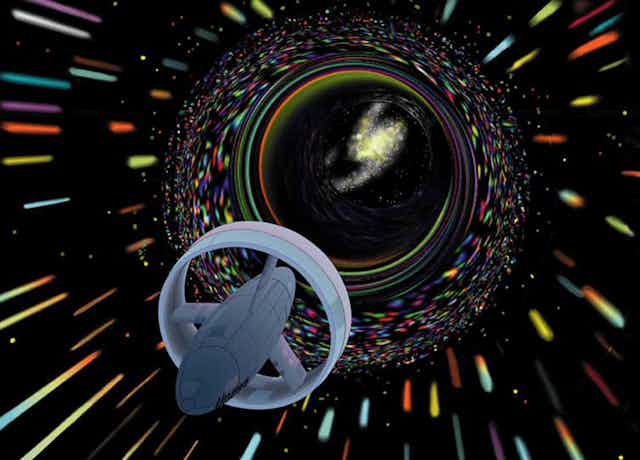

Warp drives: Physicists give chances of faster-than -light space travel a boost
Associate Professor of Physics, Oklahoma State University
Disclosure statement
Mario Borunda does not work for, consult, own shares in or receive funding from any company or organisation that would benefit from this article, and has disclosed no relevant affiliations beyond their academic appointment.
Oklahoma State University provides funding as a member of The Conversation US.
View all partners
The closest star to Earth is Proxima Centauri. It is about 4.25 light-years away, or about 25 trillion miles (40 trillion km). The fastest ever spacecraft, the now- in-space Parker Solar Probe will reach a top speed of 450,000 mph. It would take just 20 seconds to go from Los Angeles to New York City at that speed, but it would take the solar probe about 6,633 years to reach Earth’s nearest neighboring solar system.
If humanity ever wants to travel easily between stars, people will need to go faster than light. But so far, faster-than-light travel is possible only in science fiction.
In Issac Asimov’s Foundation series , humanity can travel from planet to planet, star to star or across the universe using jump drives. As a kid, I read as many of those stories as I could get my hands on. I am now a theoretical physicist and study nanotechnology, but I am still fascinated by the ways humanity could one day travel in space.
Some characters – like the astronauts in the movies “Interstellar” and “Thor” – use wormholes to travel between solar systems in seconds. Another approach – familiar to “Star Trek” fans – is warp drive technology. Warp drives are theoretically possible if still far-fetched technology. Two recent papers made headlines in March when researchers claimed to have overcome one of the many challenges that stand between the theory of warp drives and reality.
But how do these theoretical warp drives really work? And will humans be making the jump to warp speed anytime soon?
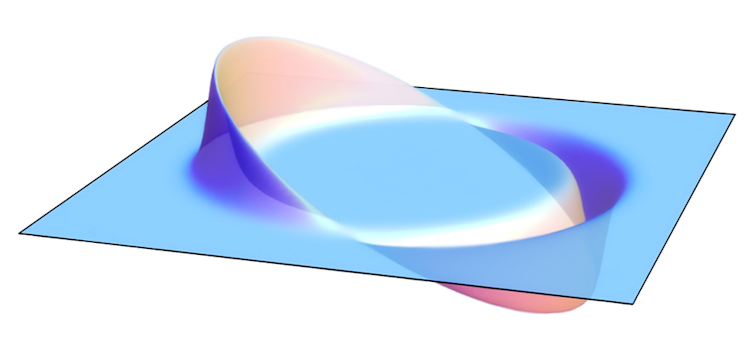
Compression and expansion
Physicists’ current understanding of spacetime comes from Albert Einstein’s theory of General Relativity . General Relativity states that space and time are fused and that nothing can travel faster than the speed of light. General relativity also describes how mass and energy warp spacetime – hefty objects like stars and black holes curve spacetime around them. This curvature is what you feel as gravity and why many spacefaring heroes worry about “getting stuck in” or “falling into” a gravity well. Early science fiction writers John Campbell and Asimov saw this warping as a way to skirt the speed limit.
What if a starship could compress space in front of it while expanding spacetime behind it? “Star Trek” took this idea and named it the warp drive.
In 1994, Miguel Alcubierre, a Mexican theoretical physicist, showed that compressing spacetime in front of the spaceship while expanding it behind was mathematically possible within the laws of General Relativity . So, what does that mean? Imagine the distance between two points is 10 meters (33 feet). If you are standing at point A and can travel one meter per second, it would take 10 seconds to get to point B. However, let’s say you could somehow compress the space between you and point B so that the interval is now just one meter. Then, moving through spacetime at your maximum speed of one meter per second, you would be able to reach point B in about one second. In theory, this approach does not contradict the laws of relativity since you are not moving faster than light in the space around you. Alcubierre showed that the warp drive from “Star Trek” was in fact theoretically possible.
Proxima Centauri here we come, right? Unfortunately, Alcubierre’s method of compressing spacetime had one problem: it requires negative energy or negative mass.
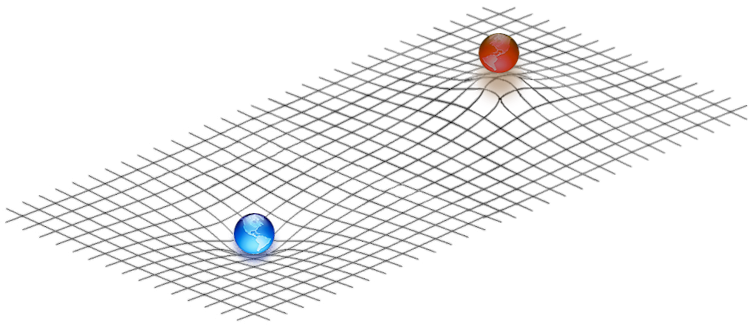
A negative energy problem
Alcubierre’s warp drive would work by creating a bubble of flat spacetime around the spaceship and curving spacetime around that bubble to reduce distances. The warp drive would require either negative mass – a theorized type of matter – or a ring of negative energy density to work. Physicists have never observed negative mass, so that leaves negative energy as the only option.
To create negative energy, a warp drive would use a huge amount of mass to create an imbalance between particles and antiparticles. For example, if an electron and an antielectron appear near the warp drive, one of the particles would get trapped by the mass and this results in an imbalance. This imbalance results in negative energy density. Alcubierre’s warp drive would use this negative energy to create the spacetime bubble.
But for a warp drive to generate enough negative energy, you would need a lot of matter. Alcubierre estimated that a warp drive with a 100-meter bubble would require the mass of the entire visible universe .
In 1999, physicist Chris Van Den Broeck showed that expanding the volume inside the bubble but keeping the surface area constant would reduce the energy requirements significantly , to just about the mass of the sun. A significant improvement, but still far beyond all practical possibilities.
A sci-fi future?
Two recent papers – one by Alexey Bobrick and Gianni Martire and another by Erik Lentz – provide solutions that seem to bring warp drives closer to reality.
Bobrick and Martire realized that by modifying spacetime within the bubble in a certain way, they could remove the need to use negative energy. This solution, though, does not produce a warp drive that can go faster than light.
[ Over 100,000 readers rely on The Conversation’s newsletter to understand the world. Sign up today .]
Independently, Lentz also proposed a solution that does not require negative energy. He used a different geometric approach to solve the equations of General Relativity, and by doing so, he found that a warp drive wouldn’t need to use negative energy. Lentz’s solution would allow the bubble to travel faster than the speed of light.
It is essential to point out that these exciting developments are mathematical models. As a physicist, I won’t fully trust models until we have experimental proof. Yet, the science of warp drives is coming into view. As a science fiction fan, I welcome all this innovative thinking. In the words of Captain Picard , things are only impossible until they are not.
- General Relativity
- Theoretical physics
- Interstellar
- Speed of light
- Albert Einstein

Economics Editor

Deputy Vice-Chancellor (Indigenous Strategy and Services)

Director and Chief of Staff, Indigenous Portfolio

Chief People & Culture Officer
Lecturer / senior lecturer in construction and project management.
September 22, 2011
Particles Found to Travel Faster Than Speed of Light
Neutrino results challenge a cornerstone of Albert Einstein's special theory of relativity, which itself forms the foundation of modern physics
By Geoff Brumfiel & Nature magazine
An Italian experiment has unveiled evidence that fundamental particles known as neutrinos can travel faster than light. Other researchers are cautious about the result, but if it stands further scrutiny, the finding would overturn the most fundamental rule of modern physics—that nothing travels faster than 299,792,458 meters per second.
The experiment is called OPERA (Oscillation Project with Emulsion-tRacking Apparatus), and lies 1,400 meters underground in the Gran Sasso National Laboratory in Italy. It is designed to study a beam of neutrinos coming from CERN, Europe's premier high-energy physics laboratory located 730 kilometers away near Geneva, Switzerland. Neutrinos are fundamental particles that are electrically neutral, rarely interact with other matter, and have a vanishingly small mass. But they are all around us—the sun produces so many neutrinos as a by-product of nuclear reactions that many billions pass through your eye every second. [ Click here to read more about CERN's Large Hadron Collider ]
The 1,800-tonne OPERA detector is a complex array of electronics and photographic emulsion plates, but the new result is simple—the neutrinos are arriving 60 nanoseconds faster than the speed of light allows. "We are shocked," says Antonio Ereditato, a physicist at the University of Bern in Switzerland and OPERA's spokesman.
On supporting science journalism
If you're enjoying this article, consider supporting our award-winning journalism by subscribing . By purchasing a subscription you are helping to ensure the future of impactful stories about the discoveries and ideas shaping our world today.
Breaking the law
The idea that nothing can travel faster than light in a vacuum is the cornerstone of Albert Einstein's special theory of relativity, which itself forms the foundation of modern physics. If neutrinos are traveling faster than light speed , then one of the most fundamental assumptions of science—that the rules of physics are the same for all observers—would be invalidated. "If it's true, then it's truly extraordinary," says John Ellis, a theoretical physicist at CERN.
Ereditato says that he is confident enough in the new result to make it public. The researchers claim to have measured the 730-kilometer trip between CERN and its detector to within 20 centimeters. They can measure the time of the trip to within 10 nanoseconds, and they have seen the effect in more than 16,000 events measured over the past two years. Given all this, they believe the result has a significance of six-sigma—the physicists' way of saying it is certainly correct. The group will present their results September 23 at CERN, and a preprint of their results will be posted on the physics website ArXiv.org .
At least one other experiment has seen a similar effect before, albeit with a much lower confidence level. In 2007, the Main Injector Neutrino Oscillation Search (MINOS) experiment in Minnesota saw neutrinos from the particle-physics facility Fermilab in Illinois arriving slightly ahead of schedule. At the time, the MINOS team downplayed the result, in part because there was too much uncertainty in the detector's exact position to be sure of its significance, says Jenny Thomas, a spokeswoman for the experiment. Thomas says that MINOS was already planning more accurate follow-up experiments before the latest OPERA result. "I'm hoping that we could get that going and make a measurement in a year or two," she says.
Reasonable doubt
If MINOS were to confirm OPERA's find, the consequences would be enormous. "If you give up the speed of light, then the construction of special relativity falls down," says Antonino Zichichi, a theoretical physicist and emeritus professor at the University of Bologna, Italy. Zichichi speculates that the "superluminal" neutrinos detected by OPERA could be slipping through extra dimensions in space, as predicted by theories such as string theory.
Ellis, however, remains skeptical. Many experiments have looked for particles traveling faster than light speed in the past and have come up empty-handed, he says. Most troubling for OPERA is a separate analysis of a pulse of neutrinos from a nearby supernova known as 1987a. If the speeds seen by OPERA were achievable by all neutrinos, then the pulse from the supernova would have shown up years earlier than the exploding star's flash of light; instead, they arrived within hours of each other. "It's difficult to reconcile with what OPERA is seeing," Ellis says.
Ereditato says that he welcomes skepticism from outsiders, but adds that the researchers have been unable to find any other explanation for their remarkable result. "Whenever you are in these conditions, then you have to go to the community," he says.
This article is reproduced with permission from the magazine Nature . The article was first published on September 22, 2011.

Suggested Searches
- Climate Change
- Expedition 64
- Mars perseverance
- SpaceX Crew-2
- International Space Station
- View All Topics A-Z
Humans in Space
Earth & climate, the solar system, the universe, aeronautics, learning resources, news & events.
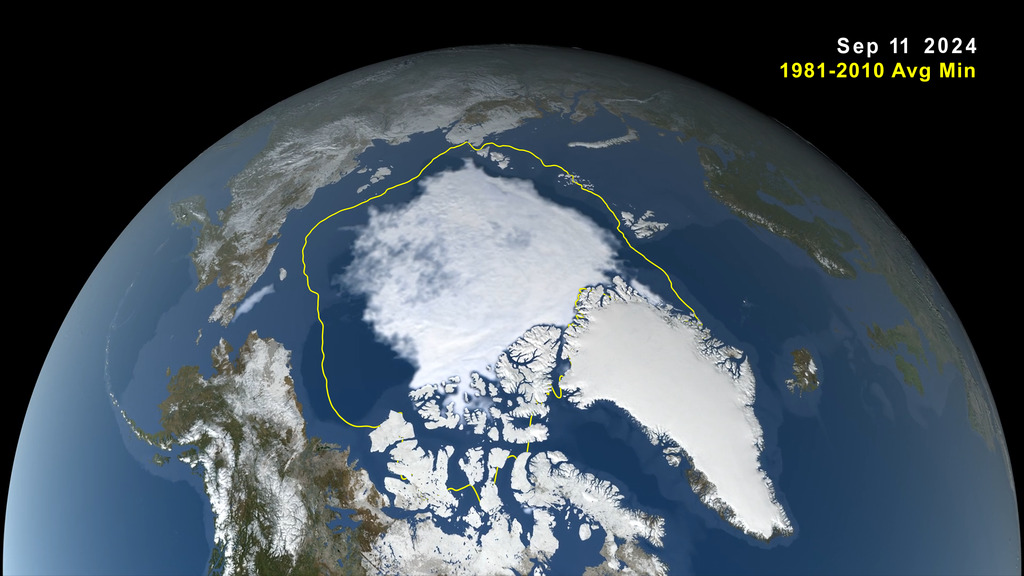
Arctic Sea Ice Near Historic Low; Antarctic Ice Continues Decline
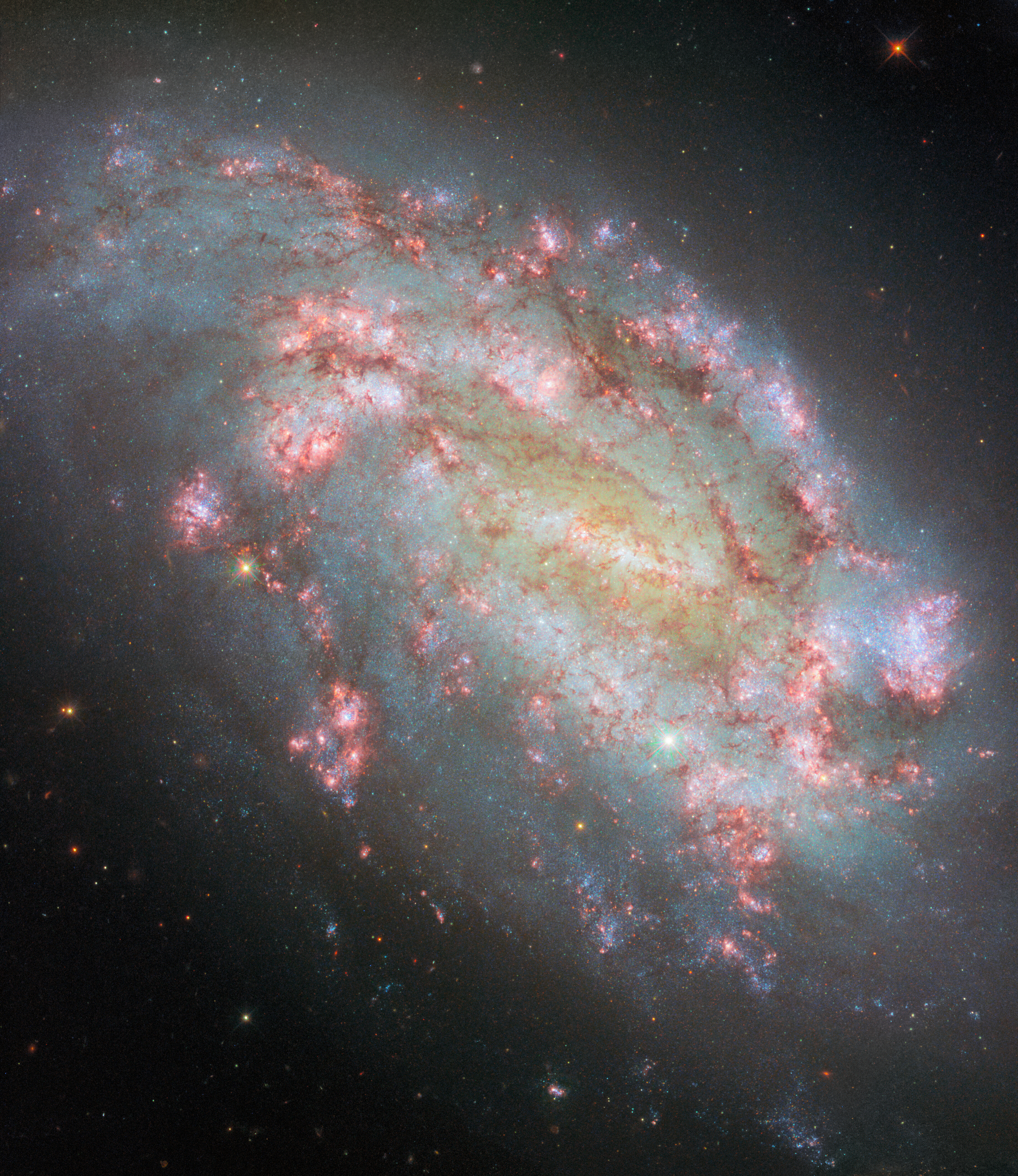
Hubble Lights the Way with New Multiwavelength Galaxy View

What’s Up: September 2024 Skywatching Tips from NASA
- Search All NASA Missions
- A to Z List of Missions
- Upcoming Launches and Landings
- Spaceships and Rockets
- Communicating with Missions
- James Webb Space Telescope
- Hubble Space Telescope
- Why Go to Space
- Commercial Space
- Destinations
- Living in Space
- Explore Earth Science
- Earth, Our Planet
- Earth Science in Action
- Earth Multimedia
- Earth Science Researchers
- Pluto & Dwarf Planets
- Asteroids, Comets & Meteors
- The Kuiper Belt
- The Oort Cloud
- Skywatching
- The Search for Life in the Universe
- Black Holes
- The Big Bang
- Dark Energy & Dark Matter
- Earth Science
- Planetary Science
- Astrophysics & Space Science
- The Sun & Heliophysics
- Biological & Physical Sciences
- Lunar Science
- Citizen Science
- Astromaterials
- Aeronautics Research
- Human Space Travel Research
- Science in the Air
- NASA Aircraft
- Flight Innovation
- Supersonic Flight
- Air Traffic Solutions
- Green Aviation Tech
- Drones & You
- Technology Transfer & Spinoffs
- Space Travel Technology
- Technology Living in Space
- Manufacturing and Materials
- Science Instruments
- For Kids and Students
- For Educators
- For Colleges and Universities
- For Professionals
- Science for Everyone
- Requests for Exhibits, Artifacts, or Speakers
- STEM Engagement at NASA
- NASA's Impacts
- Centers and Facilities
- Directorates
- Organizations
- People of NASA
- Internships
- Our History
- Doing Business with NASA
- Get Involved
NASA en Español
- Aeronáutica
- Ciencias Terrestres
- Sistema Solar
- All NASA News
- Video Series on NASA+
- Newsletters
- Social Media
- Media Resources
- Upcoming Launches & Landings
- Virtual Guest Program
- Image of the Day
- Sounds and Ringtones
- Interactives
- STEM Multimedia
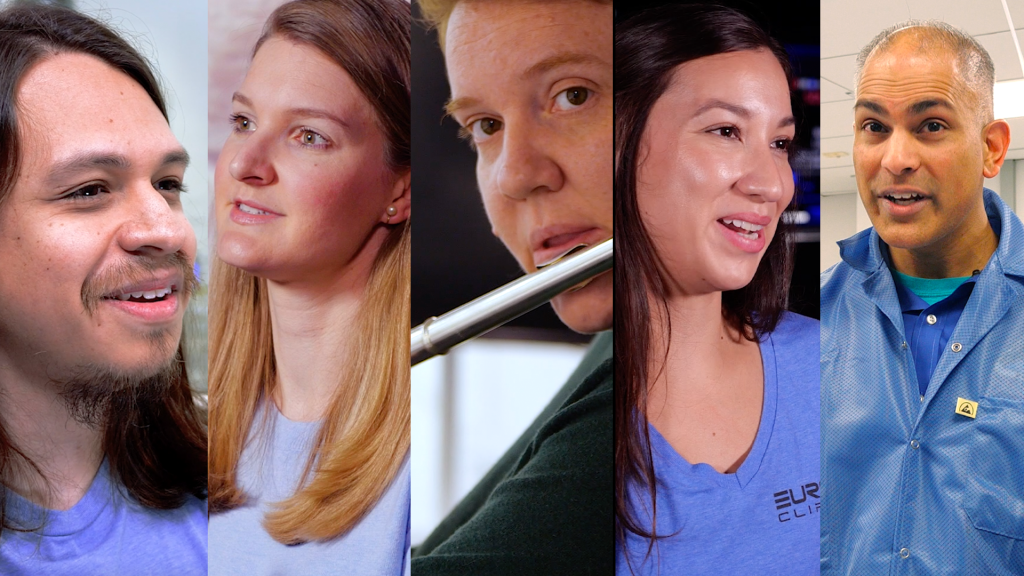
New Video Series Spotlights Engineers on NASA’s Europa Clipper Mission
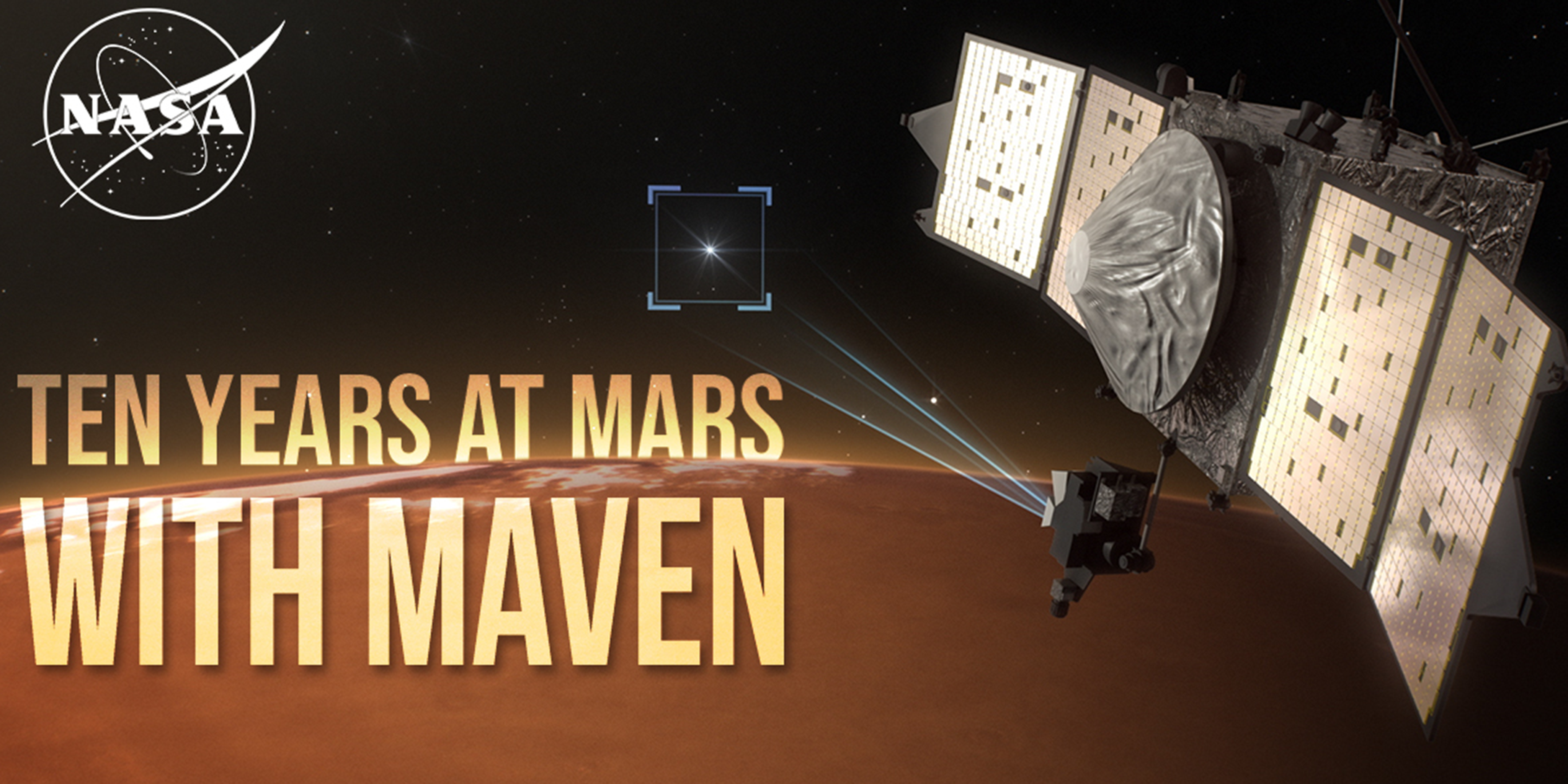
Celebrating 10 Years at Mars with NASA’s MAVEN Mission
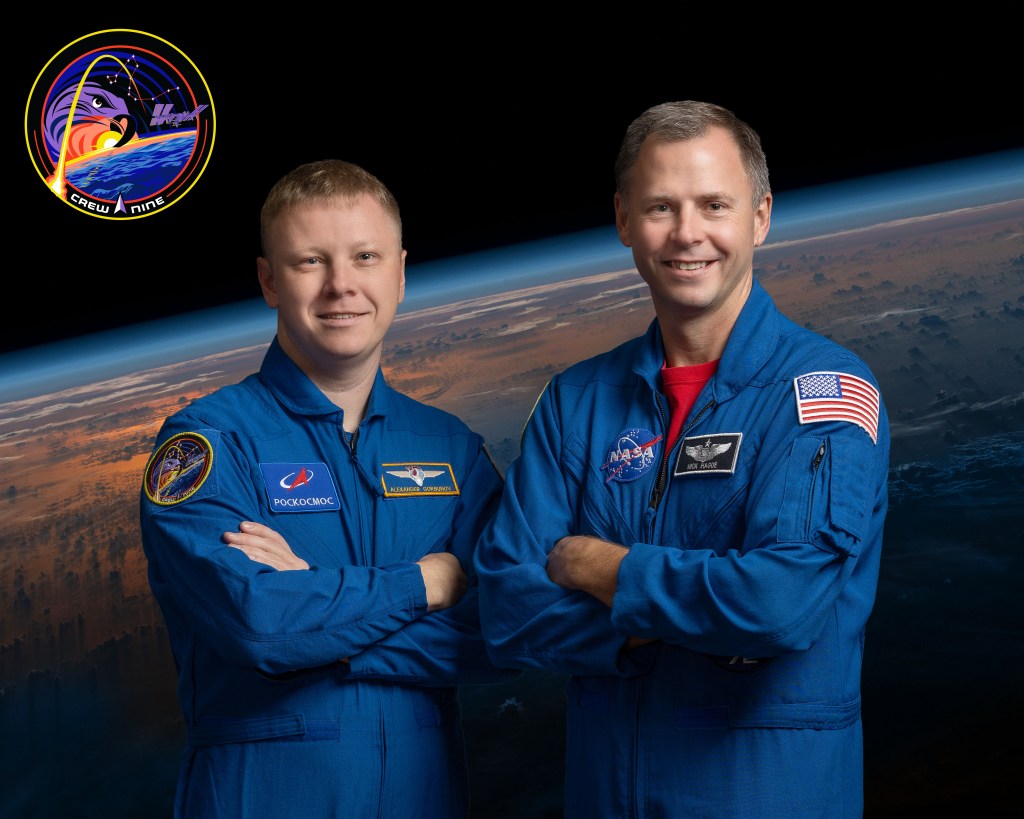
What You Need to Know about NASA’s SpaceX Crew-9 Mission
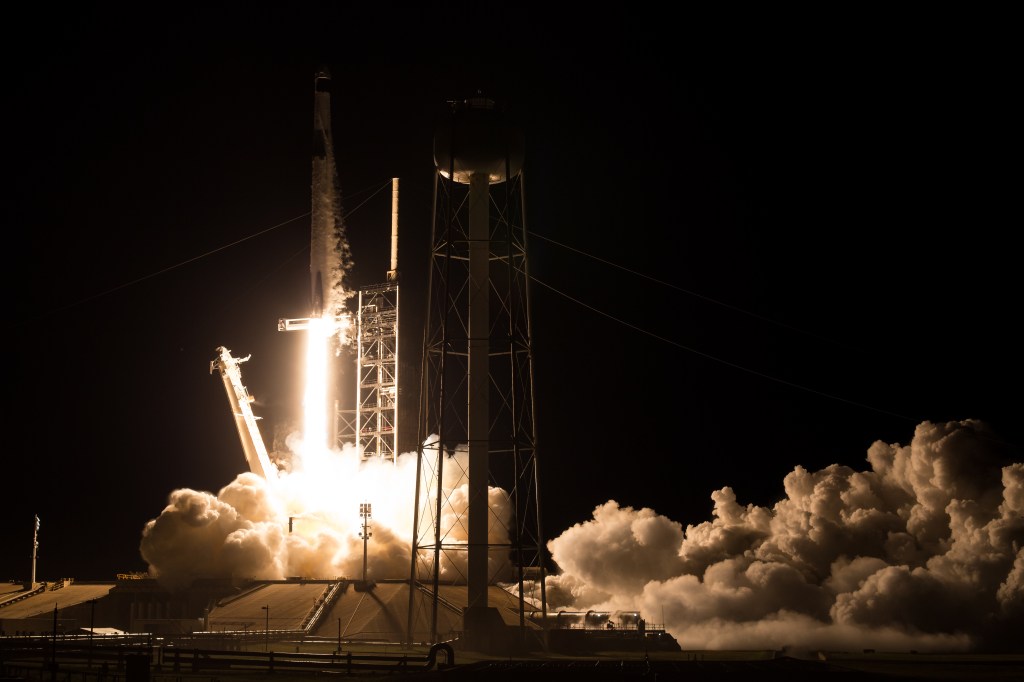
NASA Invites Public to Join as Virtual Guests for SpaceX Crew-9 Launch
Educational activities in space.

NASA Astronaut Tracy C. Dyson’s Scientific Mission aboard Space Station
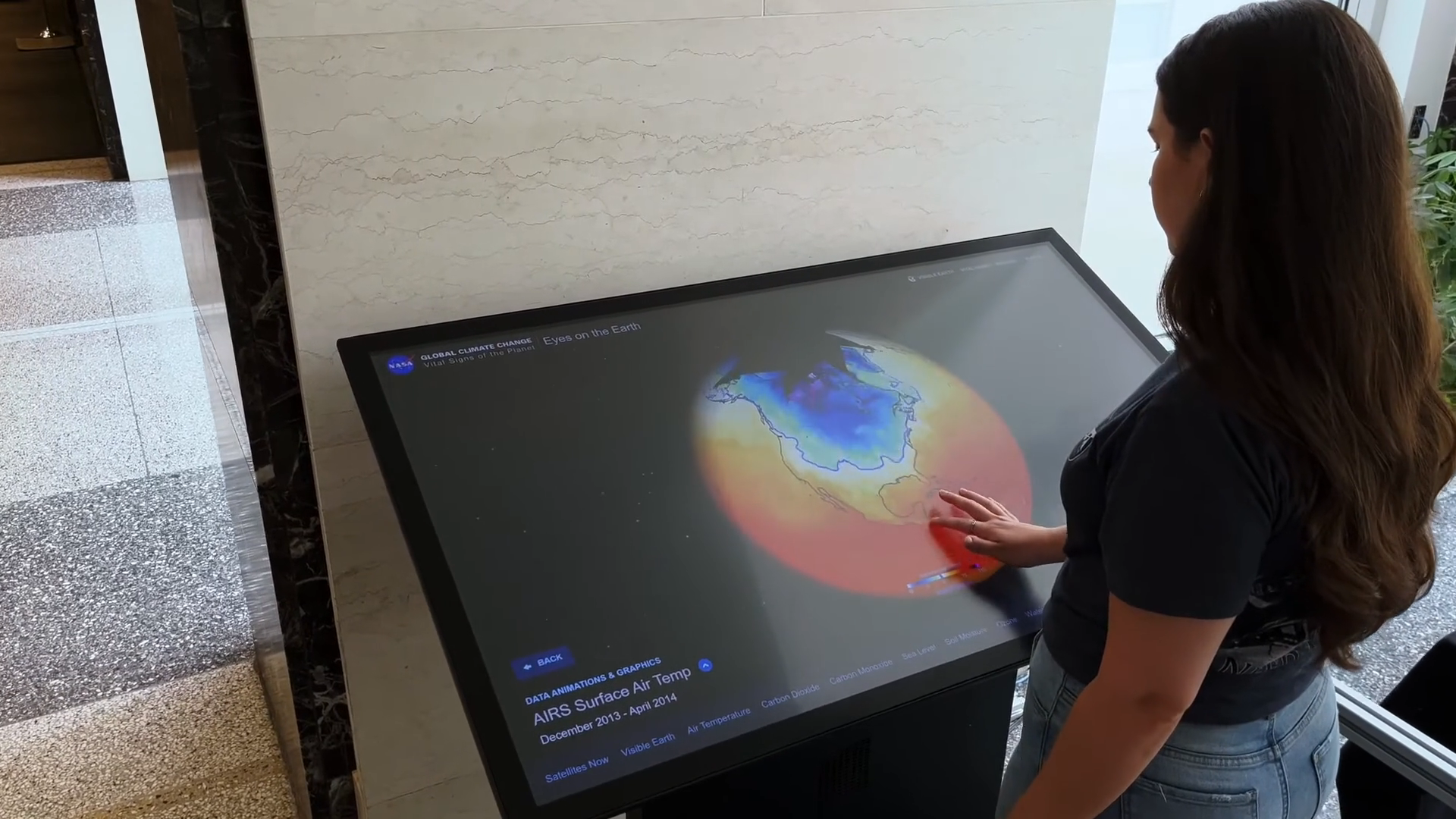
NASA’s Eyes for Museums

NASA Analysis Shows Irreversible Sea Level Rise for Pacific Islands
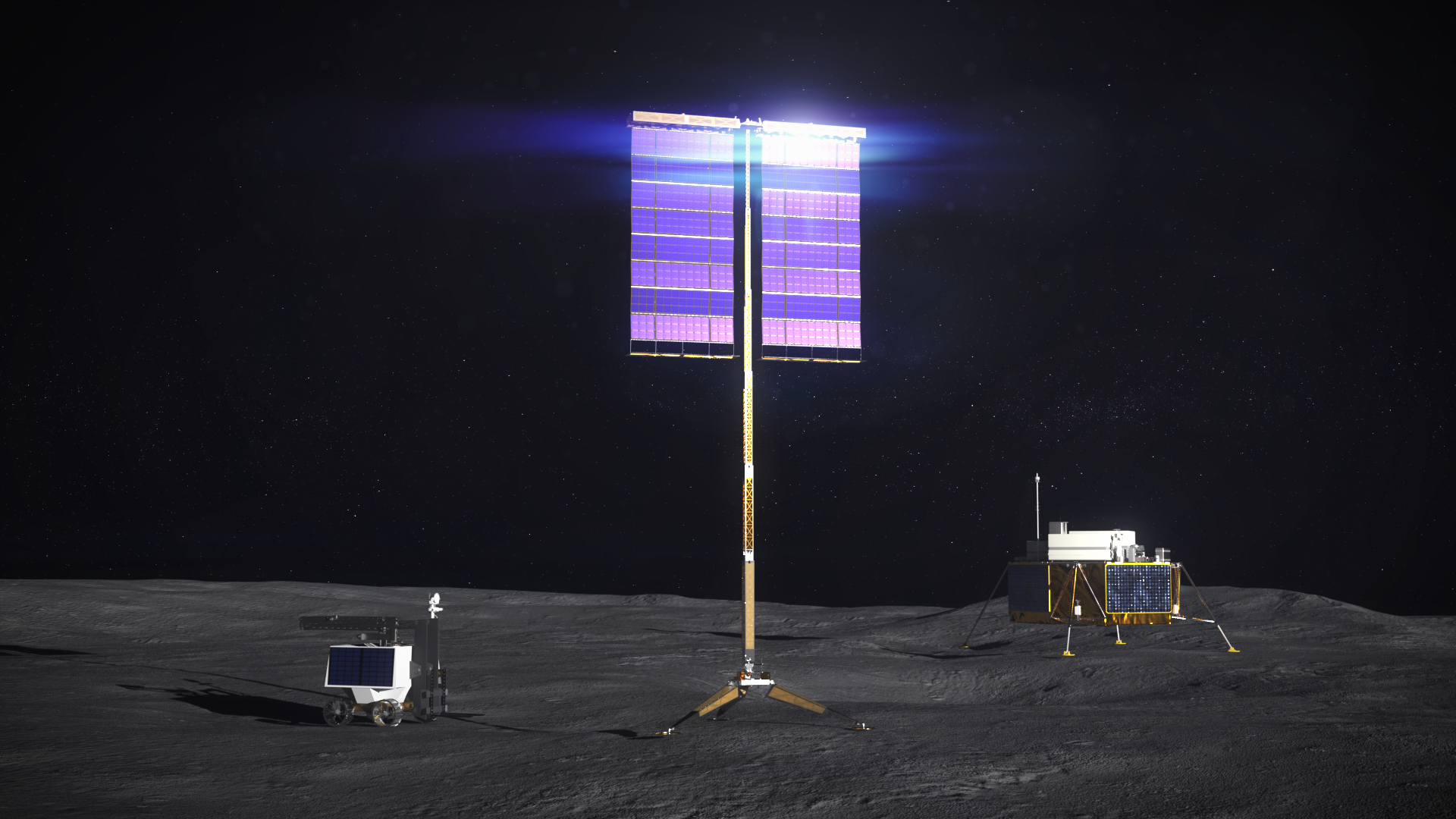
How NASA Uses and Improves Solar Power
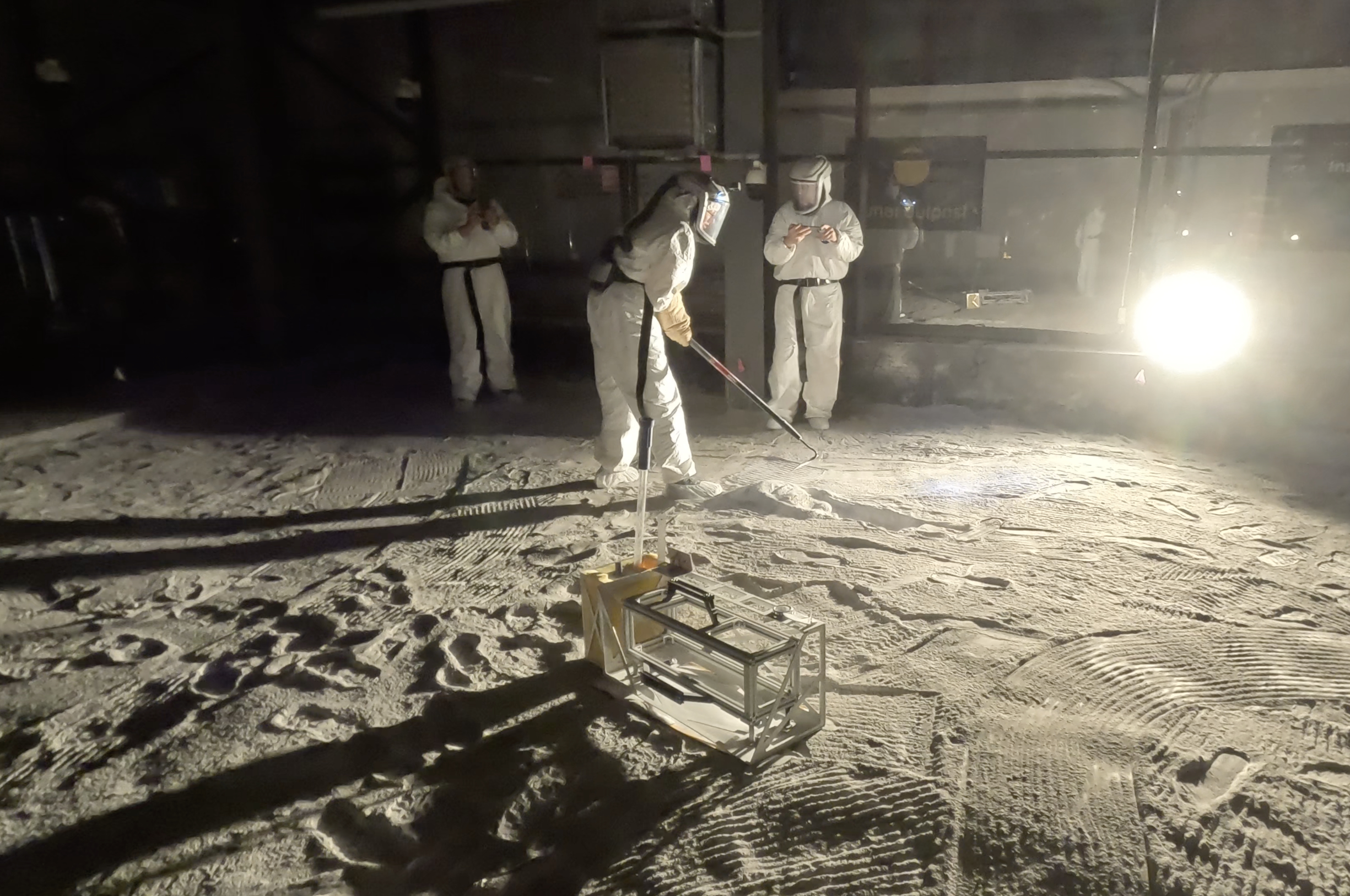
NASA’s Artemis Science Instrument Gets Tested in Moon-Like Sandbox
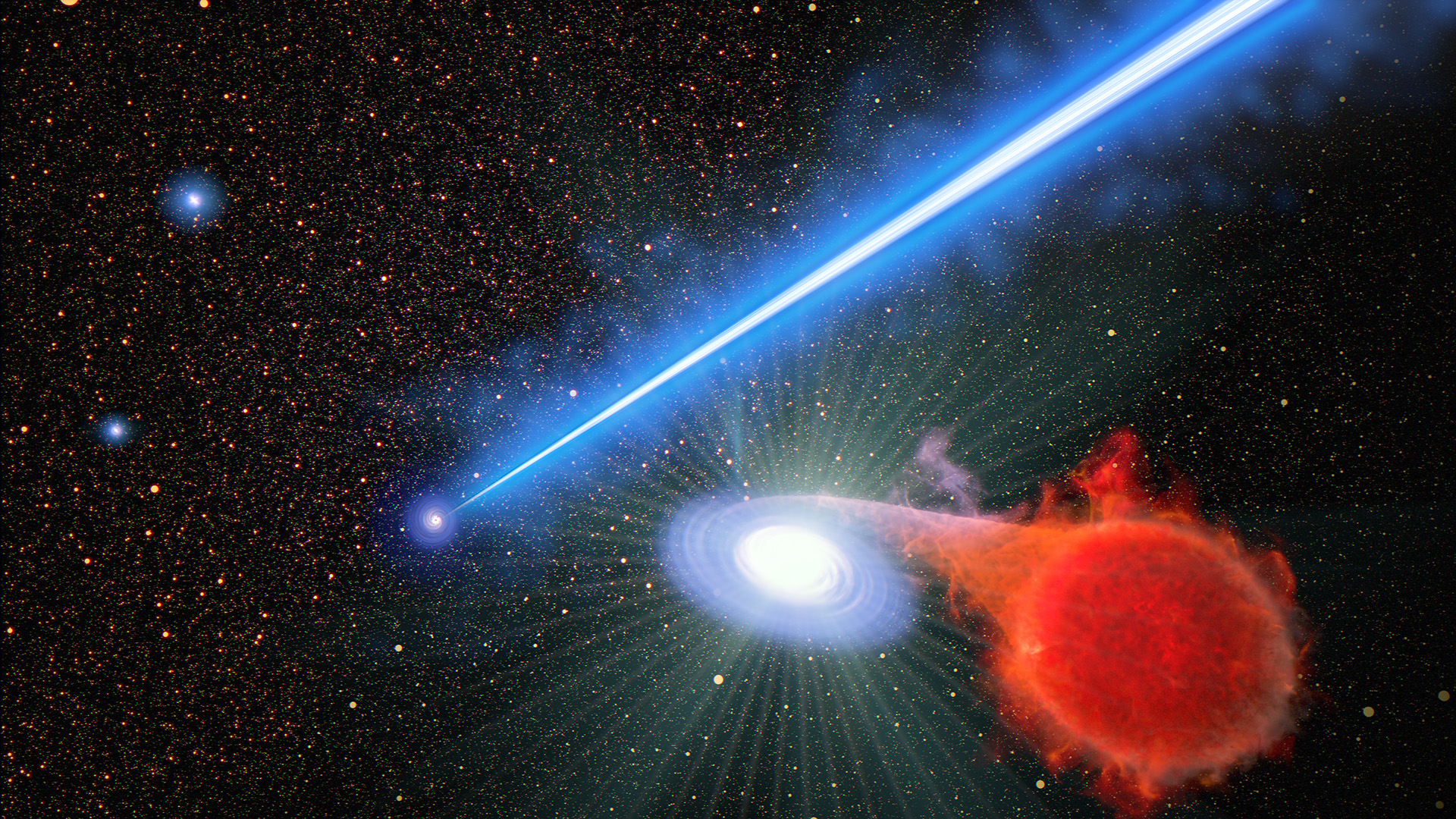
NASA’s Hubble Finds that a Black Hole Beam Promotes Stellar Eruptions
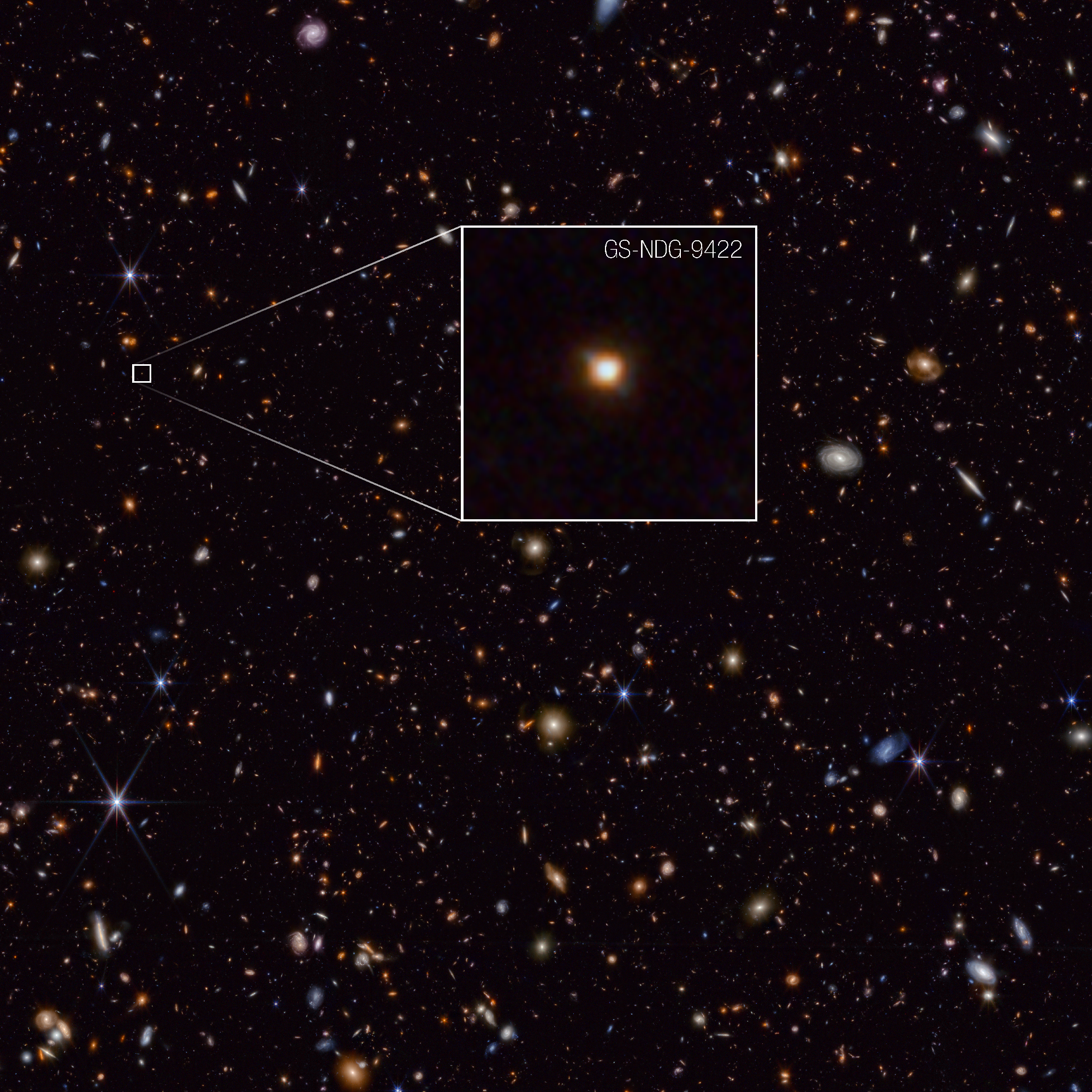
In Odd Galaxy, NASA’s Webb Finds Potential Missing Link to First Stars
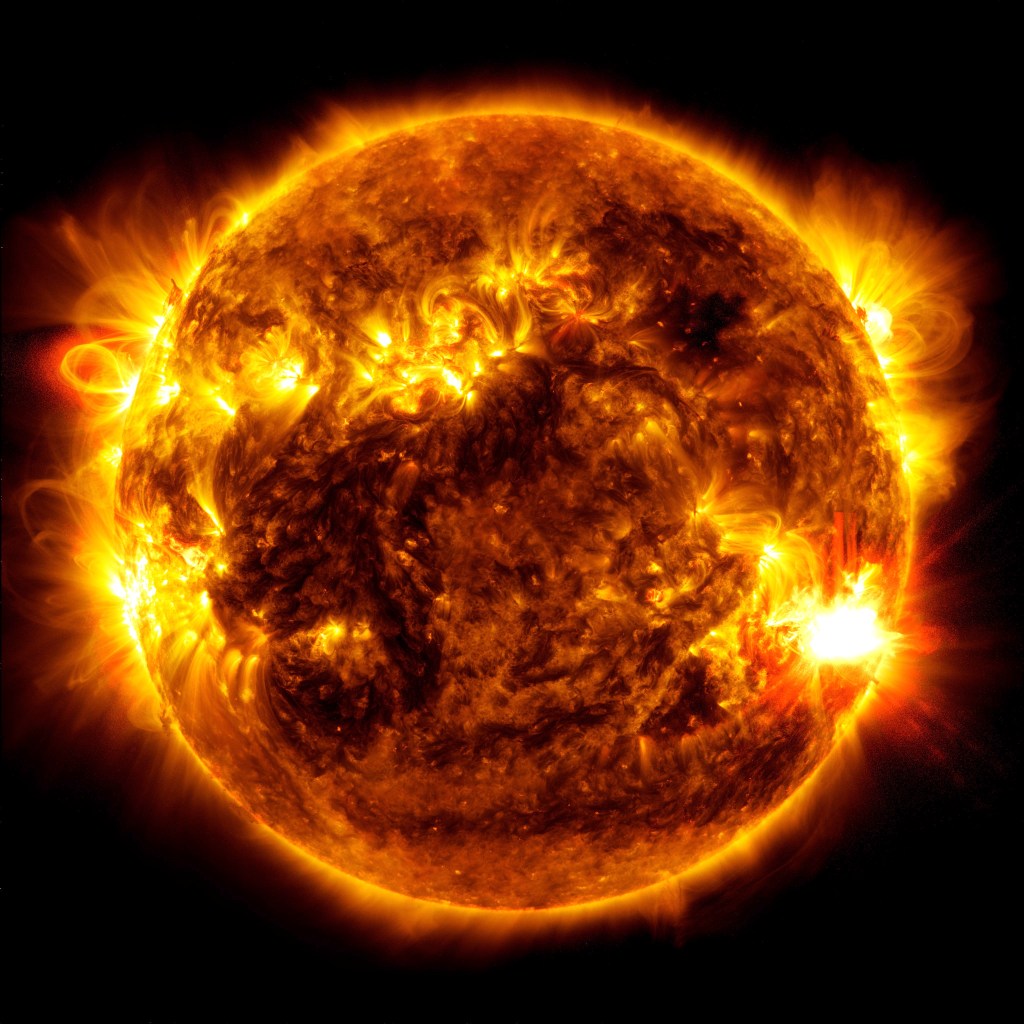
NASA’s BioSentinel Studies Solar Radiation as Earth Watches Aurora
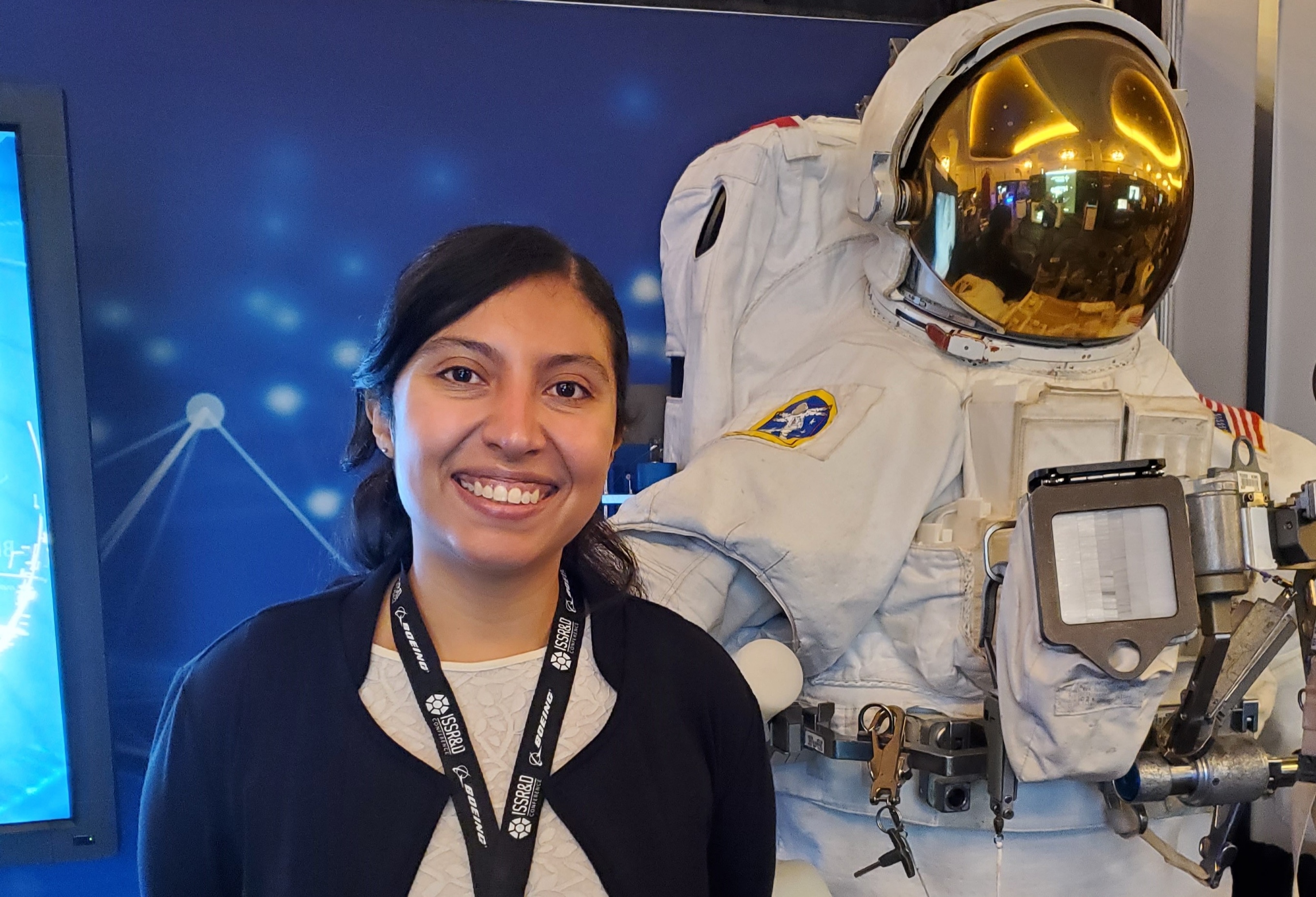
Pioneer of Change: America Reyes Wang Makes NASA Space Biology More Open

Girls in STEM Inspired to Fly High at NASA Kennedy

ARMD Solicitations

Students Soar at NASA Glenn’s Aviation Day
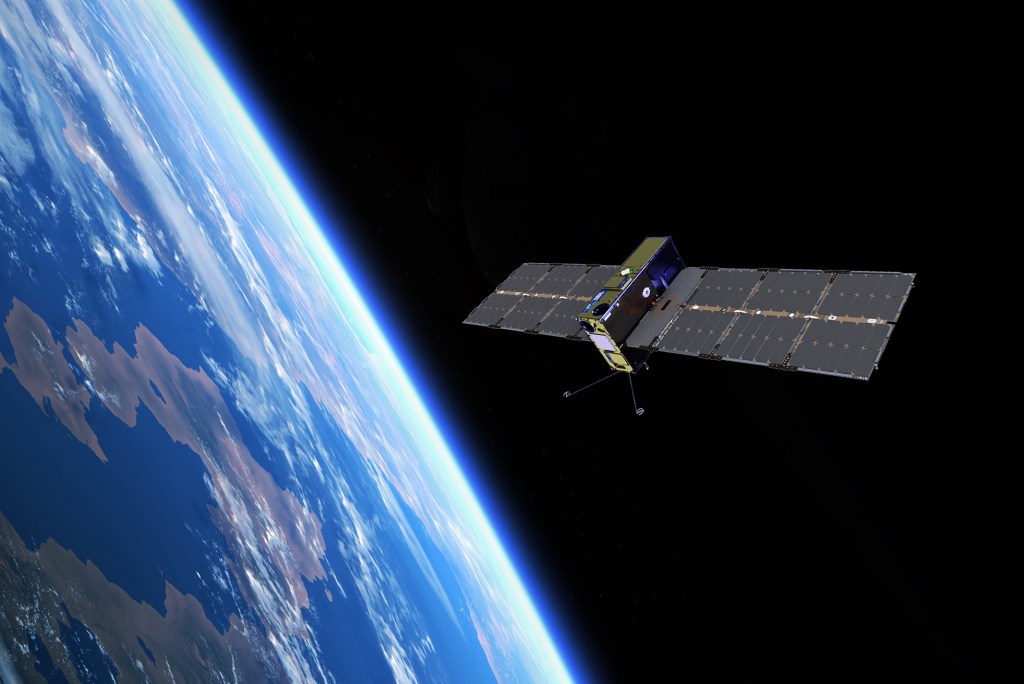
NASA’s Record-Breaking Laser Demo Completes Mission
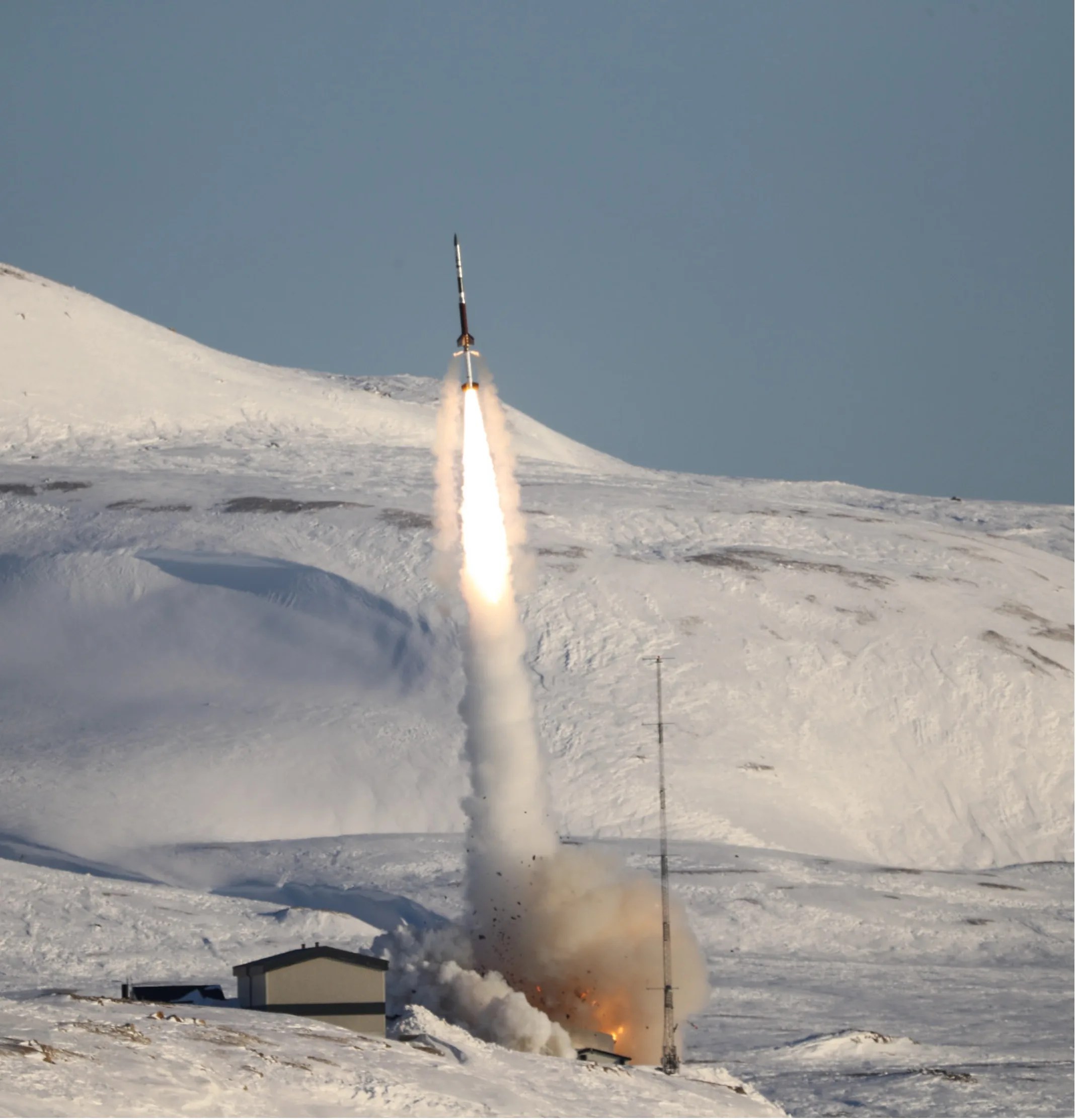
Amendment 52: B.9 Low-Cost Access to Space 2028 Peruvian campaign Update
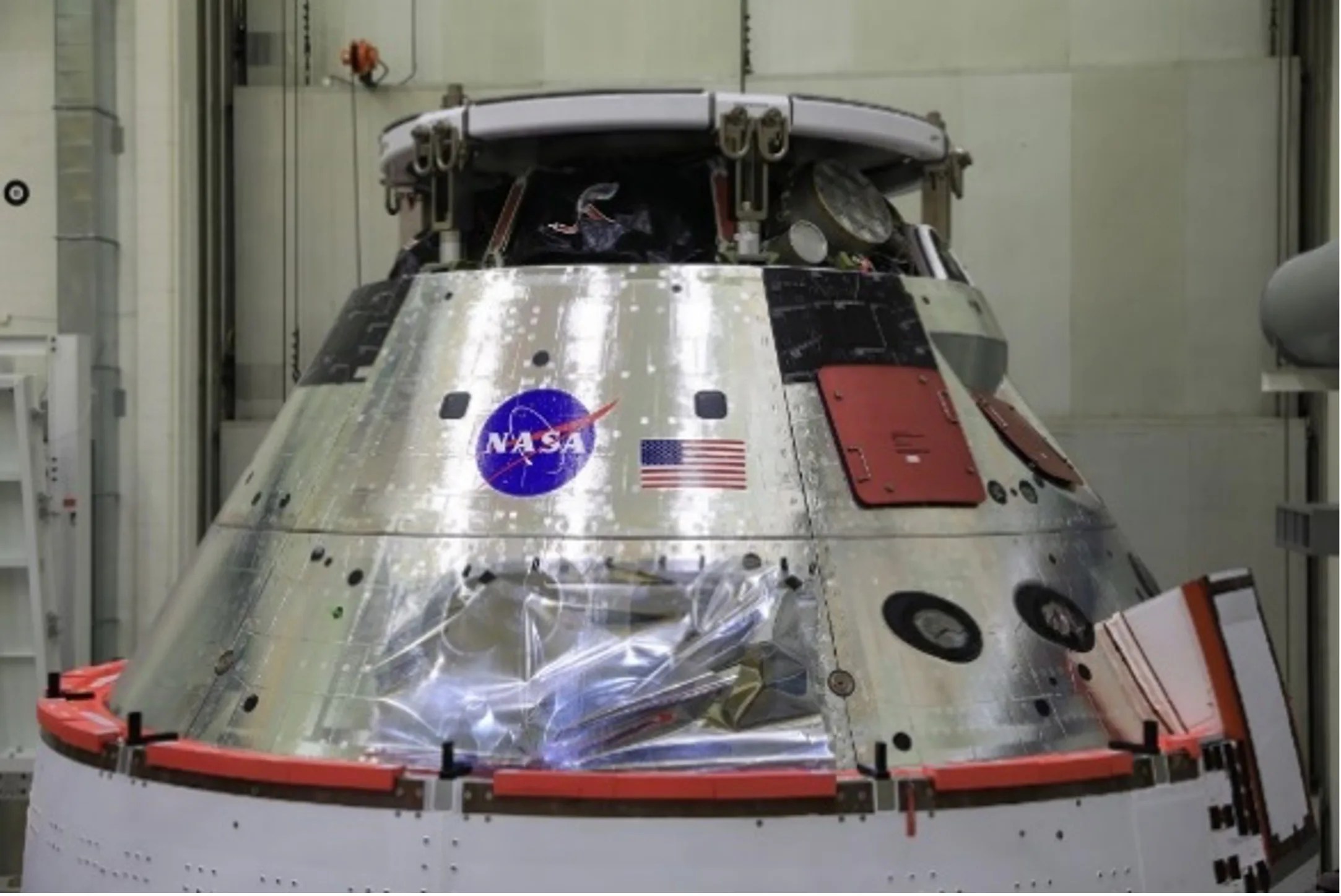
Amendment 51: F.13 Lunar Terrain Vehicle Instruments Program Final Text and Due Dates.

NASA Moon to Mars Architecture Art Challenge
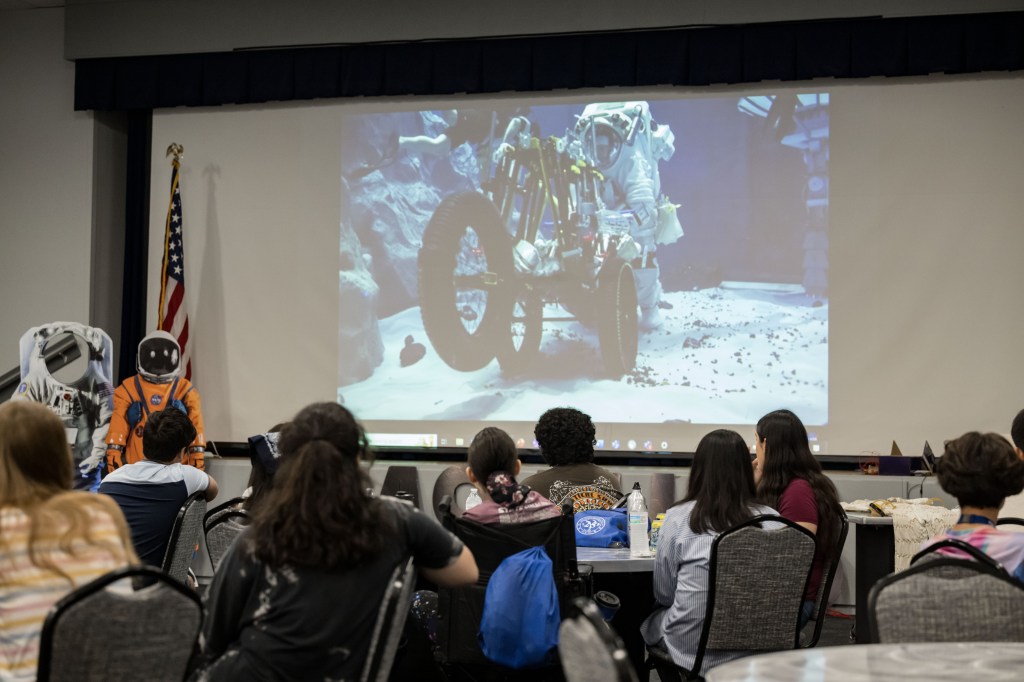
Bring NASA Into Your Classroom This Fall Through Virtual Experiences

How Do I Navigate NASA Learning Resources and Opportunities?

NASA Helps Build New Federal Sea Level Rise Website

NASA Expands Small Business, Industry Engagement Resources

La NASA invita a los medios al lanzamiento de Europa Clipper

El X-59 de la NASA avanza en las pruebas de preparación para volar

La NASA invita a creadores de las redes sociales al lanzamiento de la misión Europa Clipper
Three ways to travel at (nearly) the speed of light.


Katy Mersmann
1) electromagnetic fields, 2) magnetic explosions, 3) wave-particle interactions.
One hundred years ago today, on May 29, 1919, measurements of a solar eclipse offered verification for Einstein’s theory of general relativity. Even before that, Einstein had developed the theory of special relativity, which revolutionized the way we understand light. To this day, it provides guidance on understanding how particles move through space — a key area of research to keep spacecraft and astronauts safe from radiation.
The theory of special relativity showed that particles of light, photons, travel through a vacuum at a constant pace of 670,616,629 miles per hour — a speed that’s immensely difficult to achieve and impossible to surpass in that environment. Yet all across space, from black holes to our near-Earth environment, particles are, in fact, being accelerated to incredible speeds, some even reaching 99.9% the speed of light.
One of NASA’s jobs is to better understand how these particles are accelerated. Studying these superfast, or relativistic, particles can ultimately help protect missions exploring the solar system, traveling to the Moon, and they can teach us more about our galactic neighborhood: A well-aimed near-light-speed particle can trip onboard electronics and too many at once could have negative radiation effects on space-faring astronauts as they travel to the Moon — or beyond.
Here are three ways that acceleration happens.
Most of the processes that accelerate particles to relativistic speeds work with electromagnetic fields — the same force that keeps magnets on your fridge. The two components, electric and magnetic fields, like two sides of the same coin, work together to whisk particles at relativistic speeds throughout the universe.
In essence, electromagnetic fields accelerate charged particles because the particles feel a force in an electromagnetic field that pushes them along, similar to how gravity pulls at objects with mass. In the right conditions, electromagnetic fields can accelerate particles at near-light-speed.
On Earth, electric fields are often specifically harnessed on smaller scales to speed up particles in laboratories. Particle accelerators, like the Large Hadron Collider and Fermilab, use pulsed electromagnetic fields to accelerate charged particles up to 99.99999896% the speed of light. At these speeds, the particles can be smashed together to produce collisions with immense amounts of energy. This allows scientists to look for elementary particles and understand what the universe was like in the very first fractions of a second after the Big Bang.
Download related video from NASA Goddard’s Scientific Visualization Studio
Magnetic fields are everywhere in space, encircling Earth and spanning the solar system. They even guide charged particles moving through space, which spiral around the fields.
When these magnetic fields run into each other, they can become tangled. When the tension between the crossed lines becomes too great, the lines explosively snap and realign in a process known as magnetic reconnection. The rapid change in a region’s magnetic field creates electric fields, which causes all the attendant charged particles to be flung away at high speeds. Scientists suspect magnetic reconnection is one way that particles — for example, the solar wind, which is the constant stream of charged particles from the Sun — is accelerated to relativistic speeds.
Those speedy particles also create a variety of side-effects near planets. Magnetic reconnection occurs close to us at points where the Sun’s magnetic field pushes against Earth’s magnetosphere — its protective magnetic environment. When magnetic reconnection occurs on the side of Earth facing away from the Sun, the particles can be hurled into Earth’s upper atmosphere where they spark the auroras. Magnetic reconnection is also thought to be responsible around other planets like Jupiter and Saturn, though in slightly different ways.
NASA’s Magnetospheric Multiscale spacecraft were designed and built to focus on understanding all aspects of magnetic reconnection. Using four identical spacecraft, the mission flies around Earth to catch magnetic reconnection in action. The results of the analyzed data can help scientists understand particle acceleration at relativistic speeds around Earth and across the universe.
Particles can be accelerated by interactions with electromagnetic waves, called wave-particle interactions. When electromagnetic waves collide, their fields can become compressed. Charged particles bouncing back and forth between the waves can gain energy similar to a ball bouncing between two merging walls.
These types of interactions are constantly occurring in near-Earth space and are responsible for accelerating particles to speeds that can damage electronics on spacecraft and satellites in space. NASA missions, like the Van Allen Probes , help scientists understand wave-particle interactions.
Wave-particle interactions are also thought to be responsible for accelerating some cosmic rays that originate outside our solar system. After a supernova explosion, a hot, dense shell of compressed gas called a blast wave is ejected away from the stellar core. Filled with magnetic fields and charged particles, wave-particle interactions in these bubbles can launch high-energy cosmic rays at 99.6% the speed of light. Wave-particle interactions may also be partially responsible for accelerating the solar wind and cosmic rays from the Sun.
Download this and related videos in HD formats from NASA Goddard’s Scientific Visualization Studio
By Mara Johnson-Groh NASA’s Goddard Space Flight Center , Greenbelt, Md.

- Login/Register
- Solar System
- Exotic Objects
- Upcoming Events
- Deep-Sky Objects
- Observing Basics
- Telescopes and Equipment
- Astrophotography
- Space Exploration
- Human Spaceflight
- Robotic Spaceflight
- The Magazine
What is the speed of light? Here’s the history, discovery of the cosmic speed limit
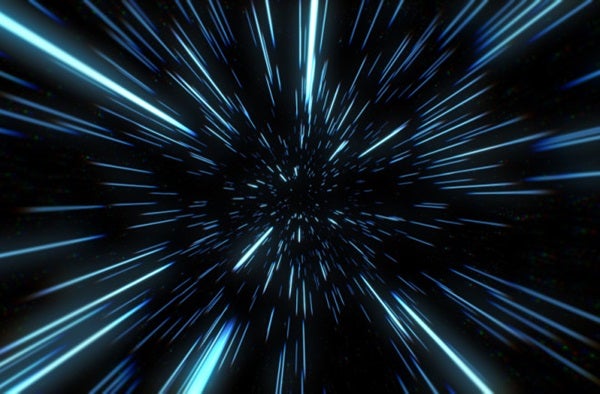
On one hand, the speed of light is just a number: 299,792,458 meters per second. And on the other, it’s one of the most important constants that appears in nature and defines the relationship of causality itself.
As far as we can measure, it is a constant. It is the same speed for every observer in the entire universe. This constancy was first established in the late 1800’s with the experiments of Albert Michelson and Edward Morley at Case Western Reserve University . They attempted to measure changes in the speed of light as the Earth orbited around the Sun. They found no such variation, and no experiment ever since then has either.
Observations of the cosmic microwave background, the light released when the universe was 380,000 years old, show that the speed of light hasn’t measurably changed in over 13.8 billion years.
In fact, we now define the speed of light to be a constant, with a precise speed of 299,792,458 meters per second. While it remains a remote possibility in deeply theoretical physics that light may not be a constant, for all known purposes it is a constant, so it’s better to just define it and move on with life.
How was the speed of light first measured?
In 1676 the Danish astronomer Ole Christensen Romer made the first quantitative measurement of how fast light travels. He carefully observed the orbit of Io, the innermost moon of Jupiter. As the Earth circles the Sun in its own orbit, sometimes it approaches Jupiter and sometimes it recedes away from it. When the Earth is approaching Jupiter, the path that light has to travel from Io is shorter than when the Earth is receding away from Jupiter. By carefully measuring the changes to Io’s orbital period, Romer calculated a speed of light of around 220,000 kilometers per second.
Observations continued to improve until by the 19 th century astronomers and physicists had developed the sophistication to get very close to the modern value. In 1865, James Clerk Maxwell made a remarkable discovery. He was investigating the properties of electricity and magnetism, which for decades had remained mysterious in unconnected laboratory experiments around the world. Maxwell found that electricity and magnetism were really two sides of the same coin, both manifestations of a single electromagnetic force.
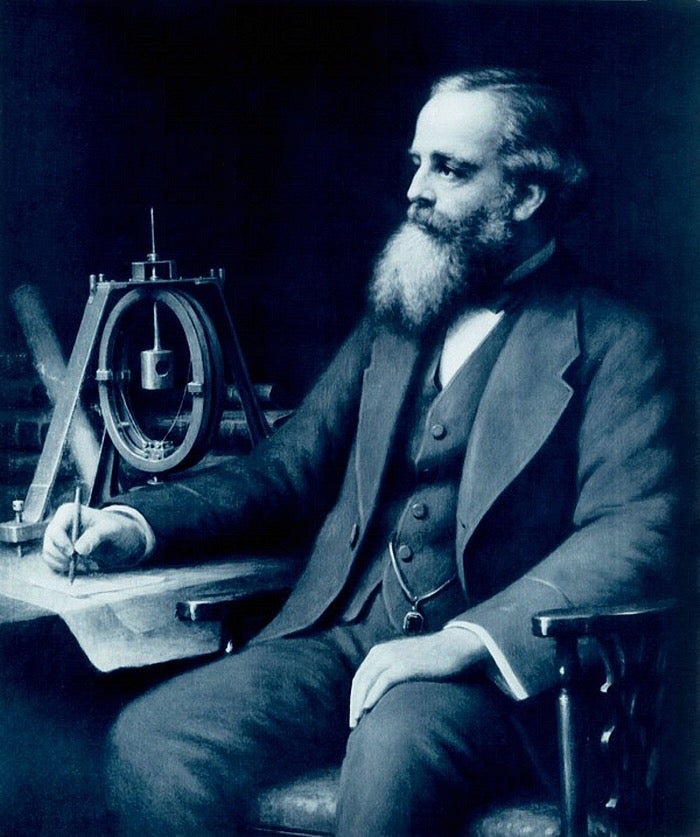
As Maxwell explored the consequences of his new theory, he found that changing magnetic fields can lead to changing electric fields, which then lead to a new round of changing magnetic fields. The fields leapfrog over each other and can even travel through empty space. When Maxwell went to calculate the speed of these electromagnetic waves, he was surprised to see the speed of light pop out – the first theoretical calculation of this important number.
What is the most precise measurement of the speed of light?
Because it is defined to be a constant, there’s no need to measure it further. The number we’ve defined is it, with no uncertainty, no error bars. It’s done. But the speed of light is just that – a speed. The number we choose to represent it depends on the units we use: kilometers versus miles, seconds versus hours, and so on. In fact, physicists commonly just set the speed of light to be 1 to make their calculations easier. So instead of trying to measure the speed light travels, physicists turn to more precisely measuring other units, like the length of the meter or the duration of the second. In other words, the defined value of the speed of light is used to establish the length of other units like the meter.
How does light slow down?
Yes, the speed of light is always a constant. But it slows down whenever it travels through a medium like air or water. How does this work? There are a few different ways to present an answer to this question, depending on whether you prefer a particle-like picture or a wave-like picture.
In a particle-like picture, light is made of tiny little bullets called photons. All those photons always travel at the speed of light, but as light passes through a medium those photons get all tangled up, bouncing around among all the molecules of the medium. This slows down the overall propagation of light, because it takes more time for the group of photons to make it through.
In a wave-like picture, light is made of electromagnetic waves. When these waves pass through a medium, they get all the charged particles in motion, which in turn generate new electromagnetic waves of their own. These interfere with the original light, forcing it to slow down as it passes through.
Either way, light always travels at the same speed, but matter can interfere with its travel, making it slow down.
Why is the speed of light important?
The speed of light is important because it’s about way more than, well, the speed of light. In the early 1900’s Einstein realized just how special this speed is. The old physics, dominated by the work of Isaac Newton, said that the universe had a fixed reference frame from which we could measure all motion. This is why Michelson and Morley went looking for changes in the speed, because it should change depending on our point of view. But their experiments showed that the speed was always constant, so what gives?
Einstein decided to take this experiment at face value. He assumed that the speed of light is a true, fundamental constant. No matter where you are, no matter how fast you’re moving, you’ll always see the same speed.
This is wild to think about. If you’re traveling at 99% the speed of light and turn on a flashlight, the beam will race ahead of you at…exactly the speed of light, no more, no less. If you’re coming from the opposite direction, you’ll still also measure the exact same speed.
This constancy forms the basis of Einstein’s special theory of relativity, which tells us that while all motion is relative – different observers won’t always agree on the length of measurements or the duration of events – some things are truly universal, like the speed of light.
Can you go faster than light speed?
Nope. Nothing can. Any particle with zero mass must travel at light speed. But anything with mass (which is most of the universe) cannot. The problem is relativity. The faster you go, the more energy you have. But we know from Einstein’s relativity that energy and mass are the same thing. So the more energy you have, the more mass you have, which makes it harder for you to go even faster. You can get as close as you want to the speed of light, but to actually crack that barrier takes an infinite amount of energy. So don’t even try.
How is the speed at which light travels related to causality?
If you think you can find a cheat to get around the limitations of light speed, then I need to tell you about its role in special relativity. You see, it’s not just about light. It just so happens that light travels at this special speed, and it was the first thing we discovered to travel at this speed. So it could have had another name. Indeed, a better name for this speed might be “the speed of time.”
Related: Is time travel possible? An astrophysicist explains
We live in a universe of causes and effects. All effects are preceded by a cause, and all causes lead to effects. The speed of light limits how quickly causes can lead to effects. Because it’s a maximum speed limit for any motion or interaction, in a given amount of time there’s a limit to what I can influence. If I want to tap you on the shoulder and you’re right next to me, I can do it right away. But if you’re on the other side of the planet, I have to travel there first. The motion of me traveling to you is limited by the speed of light, so that sets how quickly I can tap you on the shoulder – the speed light travels dictates how quickly a single cause can create an effect.
The ability to go faster than light would allow effects to happen before their causes. In essence, time travel into the past would be possible with faster-than-light travel. Since we view time as the unbroken chain of causes and effects going from the past to the future, breaking the speed of light would break causality, which would seriously undermine our sense of the forward motion of time.
Why does light travel at this speed?
No clue. It appears to us as a fundamental constant of nature. We have no theory of physics that explains its existence or why it has the value that it does. We hope that a future understanding of nature will provide this explanation, but right now all investigations are purely theoretical. For now, we just have to take it as a given.
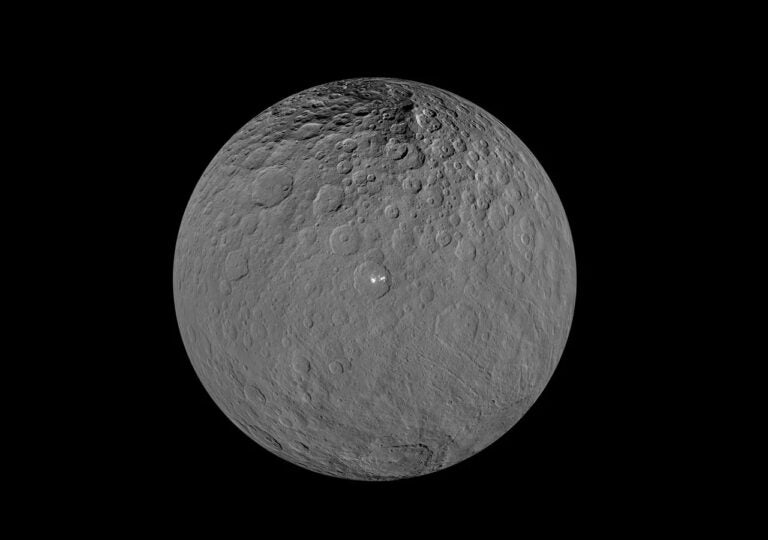
Short-lived organics on Ceres hint at a past ocean — and conditions ripe for life
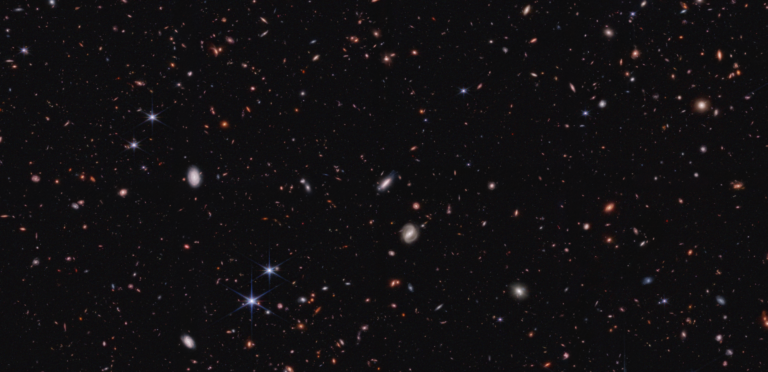
Early galaxies may be smaller than initially thought
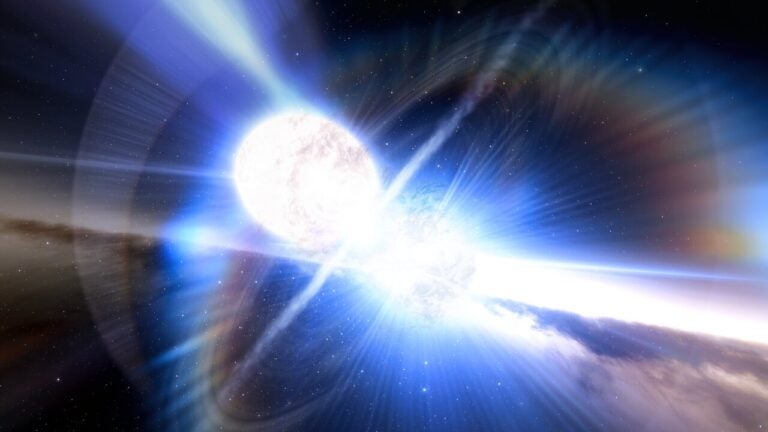
BlackHoleFinder invites you to discover new black holes
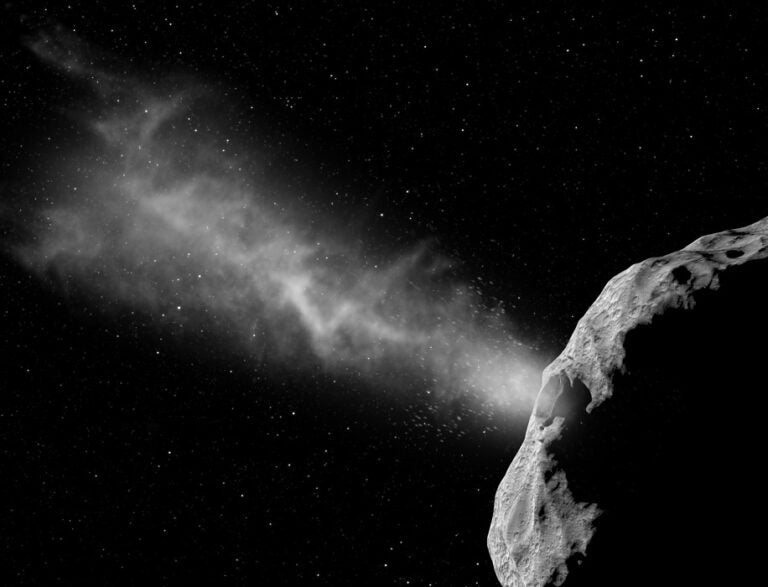
Nuclear bombs really could deflect asteroids, lab tests suggest
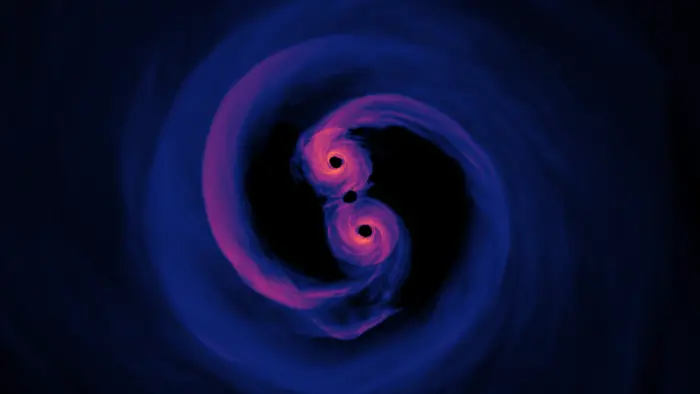
Why weren’t astronomers sure that supermassive black holes could merge?
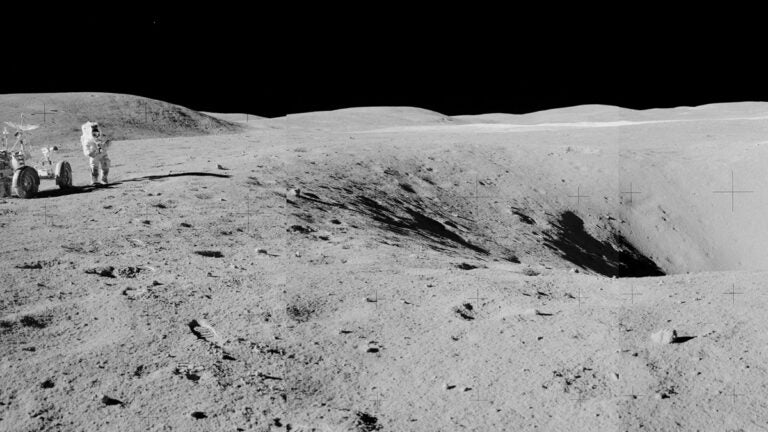
Traces of Earth’s earliest atmosphere could be buried on the Moon
![which travel faster than light Albireo (Beta [β] Cygni) is a classic example of a double star with contrasting colors.](https://www.astronomy.com/uploads/2024/08/Albireo.jpg)
What gives stars their colors?
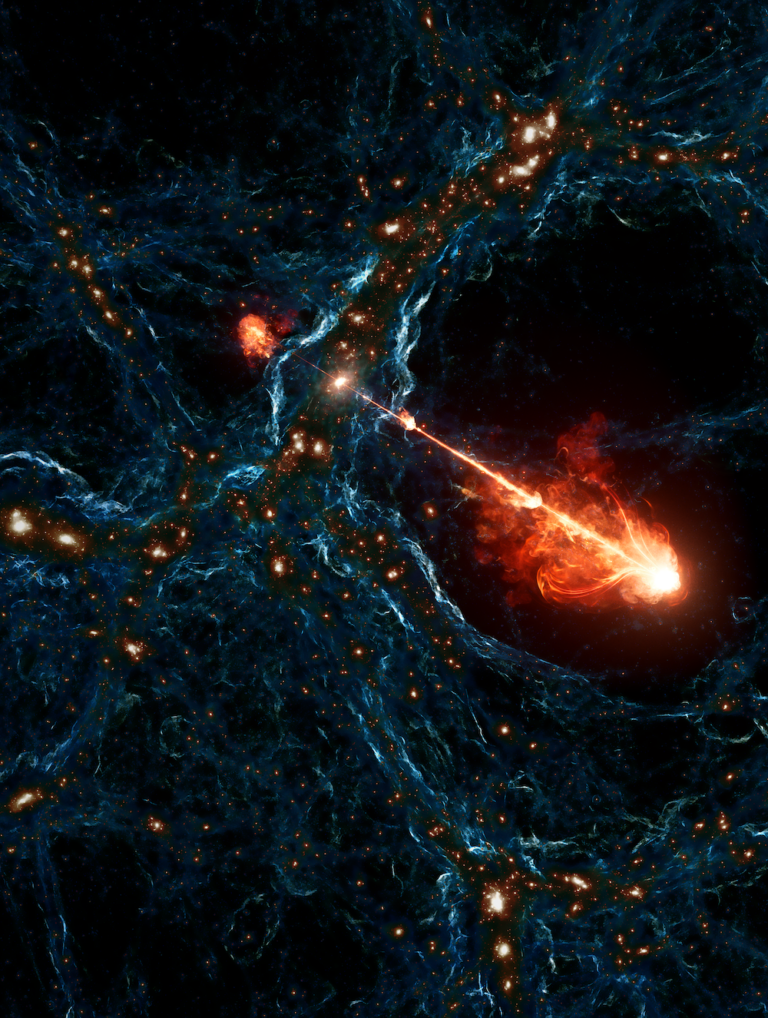
Black hole caught blasting jets out into the cosmic void

’Starry Night’ captures the turbulent physics of why stars twinkle
Hidden in Einstein's Math: Faster-than-Light Travel?
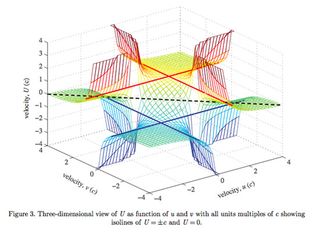
Although Einstein's theories suggest nothing can move faster than the speed of light, two scientists have extended his equations to show what would happen if faster-than-light travel were possible.
Despite an apparent prohibition on such travel by Einstein’s theory of special relativity , the scientists said the theory actually lends itself easily to a description of velocities that exceed the speed of light.
"We started thinking about it, and we think this is a very natural extension of Einstein's equations," said applied mathematician James Hill, who co-authored the new paper with his University of Adelaide, Australia, colleague Barry Cox. The paper was published Oct. 3 in the journal Proceedings of the Royal Society A: Mathematical and Physical Sciences.
Special relativity, proposed by Albert Einstein in 1905, showed how concepts like speed are all relative: A moving observer will measure the speed of an object to be different than a stationary observer will. Furthermore, relativity revealed the concept of time dilation , which says that the faster you go, the more time seems to slow down. Thus, the crew of a speeding spaceship might perceive their trip to another planet to take two weeks, while people left behind on Earth would observe their passage taking 20 years.
Yet special relativity breaks down if two people's relative velocity, the difference between their respective speeds, approaches the speed of light. Now, Hill and Cox have extended the theory to accommodate an infinite relative velocity. [ Top 10 Implications of Faster-Than-Light Neutrinos ]
Interestingly, neither the original Einstein equations, nor the new, extended theory can describe massive objects moving at the speed of light itself. Here, both sets of equations break down into mathematical singularities, where physical properties can't be defined.
"The actual business of going through the speed of light is not defined," Hill told LiveScience. "The theory we've come up with is simply for velocities greater than the speed of light."
Sign up for the Live Science daily newsletter now
Get the world’s most fascinating discoveries delivered straight to your inbox.
In effect, the singularity divides the universe into two: a world where everything moves slower than the speed of light, and a world where everything moves faster. The laws of physics in these two realms could turn out to be quite different.
In some ways, the hidden world beyond the speed of light looks to be a strange one indeed. Hill and Cox's equations suggest, for example, that as a spaceship traveling at super-light speeds accelerated faster and faster, it would lose more and more mass, until at infinite velocity, its mass became zero.
"It's very suggestive that the whole game is different once you go faster than light," Hill said.
Despite the singularity, Hill is not ready to accept that the speed of light is an insurmountable wall. He compared it to crossing the sound barrier. Before Chuck Yeager became the first person to travel faster than the speed of sound in 1947, many experts questioned whether it could be done. Scientists worried that the plane would disintegrate, or the human body wouldn't survive. Neither turned out to be true.
Fears of crossing the light barrier may be similarly unfounded, Hill said.
"I think it's only a matter of time," he said. "Human ingenuity being what it is, it's going to happen, but maybe it will involve a transportation mechanism entirely different from anything presently envisaged."
Follow Clara Moskowitz on Twitter @ClaraMoskowitz or LiveScience @livescience . We're also on Facebook & Google+ .
1st-ever observation of 'spooky action' between quarks is highest-energy quantum entanglement ever detected
Stephen Hawking's black hole radiation paradox could finally be solved — if black holes aren't what they seem
Paramedics may not all be using the best method for defibrillation, study hints
Most Popular
- 2 'We have changed the view of our galaxy forever': Astronomers capture most detailed ever infrared map of the Milky Way
- 3 Watch extremely rare footage of a bigfin squid 'walking' on long, spindly arms deep in the South Pacific
- 4 'The secret to living to 110 was, don't register your death': Ig Nobel winner Saul Justin Newman on the flawed data on extreme aging
- 5 New self-swab HPV test is an alternative to Pap smears. Here's how it works.
- Subscribe to BBC Science Focus Magazine
- Previous Issues
- Future tech
- Everyday science
- Planet Earth
- Newsletters
© Getty Images
Faster-than-light travel: Is warp drive really possible?
A NASA scientist recently released a report analysing the feasibility of warp drive as a means of faster-than-light travel. Could this Star Trek technology really be possible?
In the Universe of Star Trek , humanity ventures out into the Galaxy on 5 April 2063 with the first ever journey on a ship capable of faster-than-light travel. The newly-invented ‘warp drive’ not only lets humans explore the cosmos, but attracts the attention of Vulcans and brings about our first contact with an alien species.
It’s been 54 years since we were first introduced to the Enterprise , and many of Star Trek ’s futuristic technologies have since been invented, from handheld communicators to universal translators. Warp drive is the next obvious choice: Voyager 1, which has travelled furthest from Earth of any spacecraft, took nearly 35 years to leave the Solar System. Not exactly handy for interstellar travel.
Luckily for humanity, theoretical physicists have been working on it. In May 2020, NASA scientist Harold “Sonny” White released an internal feasibility report discussing the technology from the point of view of ‘early mission planning’.
Read more about the science of Star Trek:
- ' Star Trek replicator' uses light to create 3D objects in minutes
- Star Trek -inspired aeroplane powered by ‘ionic wind’ takes flight
- Five things from Star Trek that came true
The first scientific theory of warp drive came about in 1994, when theoretical physicist Miguel Alcubierre used Einstein’s theory of General Relativity to develop a framework that would allow faster-than-light travel within the confines of the laws of physics. The key that makes it possible is that, technically, the ship itself doesn’t travel faster than light.
“What warp drive is doing is basically saying that there is no law of physics that says space-time itself can't go faster than the speed of light,” says Dr Erin Macdonald , astrophysicist and science consultant for Star Trek .
“And so the concept of warp drive is to say, all right, let's take our ship, let's build a bubble of space-time around it, and then we'll have that propel us faster than the speed of light,” she says. It’s similar to the idea of a racecar driving onboard a train: someone standing by the tracks would see the car travelling much faster than its top speed.
According to General Relativity, the Universe is a flat sheet of space-time which is warped by any object with mass. “We think of the bowling ball on the trampoline and that bowling ball dips the trampoline down,” says Macdonald, “and that's what mass does to space-time.” This distortion of space-time is what we experience as gravity.
- Subscribe to the Science Focus Podcast on these services: Acast , iTunes , Stitcher , RSS , Overcast
The Alcubierre drive uses the same concept. The ‘bubble’ surrounding the ship is an area of space-time that is compressed in front of the ship and expanded behind it. As with gravity, you could create this distortion using a large amount of mass. Alternatively, thanks to Einstein’s E = mc 2 (energy is equal to mass, times the speed of light squared), you could equally use a huge amount of energy.
Inside the bubble, space-time is completely flat, meaning the space travellers wouldn’t notice any strange, relativistic effects. The result is that the bubble of space-time is hurled across the Universe, with the travellers sitting comfortably inside their ship, speedometer still reading the same number.
Unfortunately, actually creating a warp drive is even harder than it sounds. “You have to have a very, very large amount of energy,” says José Natário , Associate Professor in mathematics at the Instituto Superior Técnico in the University of Lisbon.
“To have the deformation that you need for this kind of thing to work, you'd need much, much more energy than the Sun or the Galaxy,” he says. “But also, it’s negative energy.”
Read more from Erin Macdonald:
- Star Trek Picard premiere: solving plot holes, supernovae and our Sun’s fate
- The science of Picard with Dr Erin Macdonald
Negative energy is not something that we can currently create – certainly not in the quantities needed to power a warp drive. How could energy be negative at all?
One way to think about it is to consider a particle with negative mass. These particles would react to gravity in the exact opposite way to particles of positive mass. Instead of being pulled towards a planet or star, they would be thrown away.
“If we had some sort of component like that where we had a negative mass, whatever is keeping that mass together would be that negative energy,” says Macdonald.
This isn’t a problem that will go away with refining the idea, either: Natário proved mathematically that any form of warp drive will require negative energy.
Joseph Agnew is a graduate student at the University of Alabama in Huntsville whose undergraduate work on warp drive was published in the AIAA journal . He thinks that more research into the fundamentals of physics is the way forward for warp drive.
"Further experimental study of naturally occurring gravitational waves and perhaps a study on trying to generate artificial gravitational waves would really advance the understanding of gravity, and therefore spacetime and all the connected science," Agnew says.

Natário believes there’s an even greater problem with the concept of the Alcubierre drive. Imagine a supersonic aircraft travelling faster than the speed of sound. You don’t hear the aircraft until it has already gone past, because the sound waves can’t keep up. The warp drive experiences the same effect with light waves, meaning there is no way to send a message ahead of you.
“I call it the 'you need one to make one' problem,” says Natário. How do you create the warped space-time geometry around your ship? First, you would need to send a signal ahead of you to ‘tell’ space-time to warp, Natário says. “To make it go faster than light, you need something that would be going faster than light to begin with so that you'd be able to communicate outside the horizon.”
These two problems – combined with the slight issue that the travelers would be bombarded with incredibly high-energy radiation – are the downfall of warp drive, Nátario believes. “The bottom line is, in my opinion, it's completely impossible,” he says.
Read more from Reality Check :
- Why are so many people playing Animal Crossing?
- Peaceful protests: Are non-violent demonstrations an effective way to achieve change?
Agnew is more optimistic. "Many of these theoretical space transportation concepts rely extensively on a thorough understanding of gravity and spacetime, which just isn't the case currently," he says.
"I don't yet see any way we can say, with absolute certainty, that it will 'never happen in a million years'. When in doubt, history dictates it's better to err on the side of cautious, scientific optimism."
Macdonald, too, is hopeful. “I'm an eternal optimist with this because I want to join Starfleet,” she says. “The way I think about it is it's like we never know what's going to come down the pipe with sort of these weird, exotic, fun thought experiments.
“I agree at this stage, right now, it's a fun thought experiment. But that's not to preclude some massive discovery that may happen that we can't predict.”
Visit the BBC's Reality Check website at bit.ly/reality_check_ or follow them on Twitter @BBCRealityCheck
Share this article
Online staff writer, BBC Science Focus

- Terms & Conditions
- Privacy policy
- Cookies policy
- Code of conduct
- Magazine subscriptions
- Manage preferences
Advertisement
What If You Traveled Faster Than the Speed of Light?
- Share Content on Facebook
- Share Content on LinkedIn
- Share Content on Flipboard
- Share Content on Reddit
- Share Content via Email
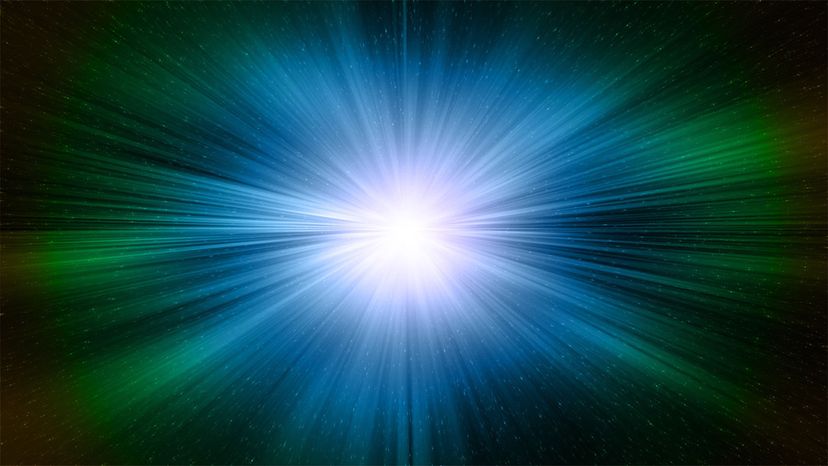
When we were kids, we were amazed that Superman could travel "faster than a speeding bullet." We could even picture him, chasing down a projectile fired from a weapon, his right arm outstretched, his cape rippling behind him. If he traveled at half the bullet 's speed, the rate at which the bullet moved away from him would halve. If he did indeed travel faster than the bullet, he would overtake it and lead the way. Go, Superman!
In other words, Superman's aerial antics obeyed Newton's views of space and time : that the positions and motions of objects in space should all be measurable relative to an absolute, nonmoving frame of reference [source: Rynasiewicz ].
In the early 1900s, scientists held firm to the Newtonian view of the world. Then a German-born mathematician and physicist by the name of Albert Einstein came along and changed everything. In 1905, Einstein published his theory of special relativity , which put forth a startling idea: There is no preferred frame of reference. Everything, even time, is relative.
Two important principles underpinned his theory. The first stated that the same laws of physics apply equally in all constantly moving frames of reference. The second said that the speed of light — about 186,000 miles per second (300,000 kilometers per second) — is constant and independent of the observer's motion or the source of light. According to Einstein, if Superman were to chase a light beam at half the speed of light, the beam would continue to move away from him at exactly the same speed [source: Stein , AMNH.org ].
These concepts seem deceptively simple, but they have some mind-bending implications. One of the biggest is represented by Einstein's famous equation, E = mc², where E is energy, m is mass and c is the speed of light.
According to this equation, mass and energy are the same physical entity and can be changed into each other. Because of this equivalence, the energy an object has due to its motion will increase its mass. In other words, the faster an object moves, the greater its mass. This only becomes noticeable when an object moves really quickly. If it moves at 10 percent the speed of light, for example, its mass will only be 0.5 percent more than normal. But if it moves at 90 percent the speed of light, its mass will double [source: LBL.gov ].
As an object approaches the speed of light, its mass rises precipitously. If an object tries to travel 186,000 miles per second, its mass becomes infinite, and so does the energy required to move it. For this reason, no normal object can travel as fast or faster than the speed of light.
That answers our question, but let's have a little fun and modify the question slightly.
Almost As Fast As the Speed of Light?
We covered the original question, but what if we tweaked it to say, "What if you traveled almost as fast as the speed of light?" In that case, you would experience some interesting effects. One famous result is something physicists call time dilation , which describes how time runs more slowly for objects moving very rapidly. If you flew on a rocket traveling 90 percent of light-speed, the passage of time for you would be halved. Your watch would advance only 10 minutes, while more than 20 minutes would pass for an Earthbound observer [source: May ]
You would also experience some strange visual consequences. One such consequence is called aberration , and it refers to how your entire field of view would shrink down to a tiny, tunnel-shaped "window" out in front of your spacecraft. This happens because photons (those exceedingly tiny packets of light) — even photons behind you — appear to come in from the forward direction.
In addition, you would notice an extreme Doppler effect , which would cause light waves from stars in front of you to crowd together, making the objects appear blue. Light waves from stars behind you would spread apart and appear red. The faster you go, the more extreme this phenomenon becomes until all visible light from stars in front of the spacecraft and stars to the rear become completely shifted out of the known visible spectrum (the colors humans can see). When these stars move out of your perceptible wavelength, they simply appear to fade to black or vanish against the background.
Of course, if you want to travel faster than a speeding photon, you'll need more than the same rocket technology we've been using for decades.
In a March 2021 paper published in the journal Classical and Quantum Gravity , astrophysicist Erik Lentz of the University of Göttingen in Germany proposed the idea of rearranging space-time to create a warp bubble, inside which a spacecraft might be able to travel at faster-than-light speeds.
Speed of Light FAQ
Is there anything faster than the speed of light, how fast is the speed of light in miles, why is "c" the speed of light, what is the speed of light on earth, lots more information, related articles.
- Data Sent via Infrared Light Could Make WiFi Hundreds of Times Faster
- How Light Propulsion Will Work
- How Light Works
- American Museum of Natural History. "A Matter of Time. " Amnh.org. (Feb. 16, 2022) https://www.amnh.org/exhibitions/einstein/time/a-matter-of-time
- Brandeker, Alexis. "What would a relativistic interstellar traveler see?" Usenet Physics FAQ. May 2002. (Feb. 16, 2022J) http://www.desy.de/user/projects/Physics/Relativity/SR/Spaceship/spaceship.html
- Carl Sagan's Cosmos. "Travels in Space and Time." YouTube. Video uploaded Nov. 27, 2006 (Feb. 16, 2022 ) https://www.youtube.com/watch?v=2t8hUaaZVJg
- Hawking, Stephen. "The Illustrated Brief History of Time. " Bantam. 1996. (Feb. 16. 2022) https://bit.ly/367UGpZ
- EurekAlert! "Breaking the warp barrier for faster-than-light travel. " Eurekalert.org. March 9, 2021. (Feb. 16, 2022) https://www.eurekalert.org/news-releases/642756
- Lawrence Berkeley National Laboratory. "Mass, Energy, the Speed of Light – It's Not Intuitive! " Lbl.gov. 1996. (Feb. 16, 2022) https://www2.lbl.gov/MicroWorlds/teachers/massenergy.pdf
- Lemonick, Michael D. "Will We Ever Travel at the Speed of Light?" Time. Apr. 10, 2000. (Feb. 16, 2022), 2011) http://content.time.com/time/subscriber/article/0,33009,996616,00.html
- May, Andrew. "What is time dilation? " LiveScience. Nov. 17, 2021. (Feb. 16, 2022) https://www.livescience.com/what-is-time-dilation
- NOVA Physics + Math. "Carl Sagan Ponders Time Travel." NOVA. Oct. 12, 1999. (Feb. 16, 2022) http://www.pbs.org/wgbh/nova/physics/Sagan-Time-Travel.html
- Ptak, Andy. "The Speed of Light in a Rocket." NASA's Imagine the Universe: Ask An Astrophysicist. Jan. 2, 1997. (Feb. 16, 2022) http://imagine.gsfc.nasa.gov/docs/ask_astro/answers/970102c.html
- Rynasiewicz, Robert, "Newton's Views on Space, Time, and Motion."Stanford Encyclopedia of Philosophy. Summer 2014. (Feb. 16, 2022) https://plato.stanford.edu/cgi-bin/encyclopedia/archinfo.cgi?entry=newton-stm
- Stein, Vicky. "Einstein's Theory of Special Relativity. " Space.com. Sept. 20, 2021. (Feb. 16, 2022) https://www.space.com/36273-theory-special-relativity.html
- Van Zyl, Miezam (project editor)."Universe: The Definitive Visual Guide." Dorling Kindersley Limited. 2020. (Feb. 16, 2022) https://bit.ly/33q5Mpm.
Please copy/paste the following text to properly cite this HowStuffWorks.com article:
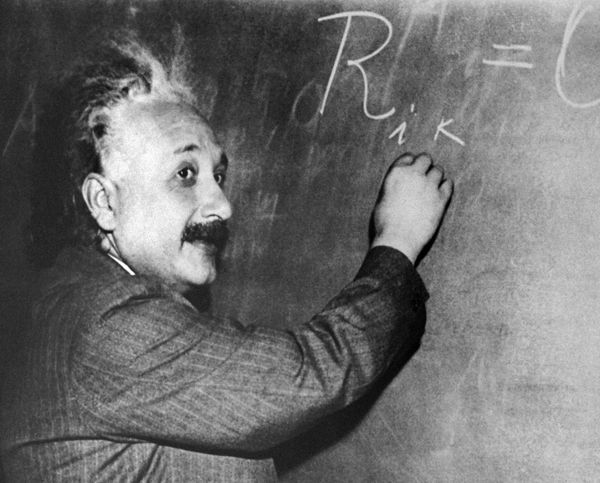
What is the speed of light?
The speed of light is the speed limit of the universe. Or is it?

What is a light-year?
- Speed of light FAQs
- Special relativity
- Faster than light
- Slowing down light
- Faster-than-light travel
Bibliography
The speed of light traveling through a vacuum is exactly 299,792,458 meters (983,571,056 feet) per second. That's about 186,282 miles per second — a universal constant known in equations as "c," or light speed.
According to physicist Albert Einstein 's theory of special relativity , on which much of modern physics is based, nothing in the universe can travel faster than light. The theory states that as matter approaches the speed of light, the matter's mass becomes infinite. That means the speed of light functions as a speed limit on the whole universe . The speed of light is so immutable that, according to the U.S. National Institute of Standards and Technology , it is used to define international standard measurements like the meter (and by extension, the mile, the foot and the inch). Through some crafty equations, it also helps define the kilogram and the temperature unit Kelvin .
But despite the speed of light's reputation as a universal constant, scientists and science fiction writers alike spend time contemplating faster-than-light travel. So far no one's been able to demonstrate a real warp drive, but that hasn't slowed our collective hurtle toward new stories, new inventions and new realms of physics.
Related: Special relativity holds up to a high-energy test
A l ight-year is the distance that light can travel in one year — about 6 trillion miles (10 trillion kilometers). It's one way that astronomers and physicists measure immense distances across our universe.
Light travels from the moon to our eyes in about 1 second, which means the moon is about 1 light-second away. Sunlight takes about 8 minutes to reach our eyes, so the sun is about 8 light minutes away. Light from Alpha Centauri , which is the nearest star system to our own, requires roughly 4.3 years to get here, so Alpha Centauri is 4.3 light-years away.
"To obtain an idea of the size of a light-year, take the circumference of the Earth (24,900 miles), lay it out in a straight line, multiply the length of the line by 7.5 (the corresponding distance is one light-second), then place 31.6 million similar lines end to end," NASA's Glenn Research Center says on its website . "The resulting distance is almost 6 trillion (6,000,000,000,000) miles!"
Stars and other objects beyond our solar system lie anywhere from a few light-years to a few billion light-years away. And everything astronomers "see" in the distant universe is literally history. When astronomers study objects that are far away, they are seeing light that shows the objects as they existed at the time that light left them.
This principle allows astronomers to see the universe as it looked after the Big Bang , which took place about 13.8 billion years ago. Objects that are 10 billion light-years away from us appear to astronomers as they looked 10 billion years ago — relatively soon after the beginning of the universe — rather than how they appear today.
Related: Why the universe is all history
Speed of light FAQs answered by an expert
We asked Rob Zellem, exoplanet-hunter and staff scientist at NASA's Jet Propulsion Lab, a few frequently asked questions about the speed of light.
Dr. Rob Zellem is a staff scientist at NASA's Jet Propulsion Laboratory, a federally funded research and development center operated by the California Institute of Technology. Rob is the project lead for Exoplanet Watch, a citizen science project to observe exoplanets, planets outside of our own solar system, with small telescopes. He is also the Science Calibration lead for the Nancy Grace Roman Space Telescope's Coronagraph Instrument, which will directly image exoplanets.
What is faster than the speed of light?
Nothing! Light is a "universal speed limit" and, according to Einstein's theory of relativity, is the fastest speed in the universe: 300,000 kilometers per second (186,000 miles per second).
Is the speed of light constant?
The speed of light is a universal constant in a vacuum, like the vacuum of space. However, light *can* slow down slightly when it passes through an absorbing medium, like water (225,000 kilometers per second = 140,000 miles per second) or glass (200,000 kilometers per second = 124,000 miles per second).
Who discovered the speed of light?
One of the first measurements of the speed of light was by Rømer in 1676 by observing the moons of Jupiter . The speed of light was first measured to high precision in 1879 by the Michelson-Morley Experiment.
How do we know the speed of light?
Rømer was able to measure the speed of light by observing eclipses of Jupiter's moon Io. When Jupiter was closer to Earth, Rømer noted that eclipses of Io occurred slightly earlier than when Jupiter was farther away. Rømer attributed this effect due the time it takes for light to travel over the longer distance when Jupiter was farther from the Earth.
How did we learn the speed of light?
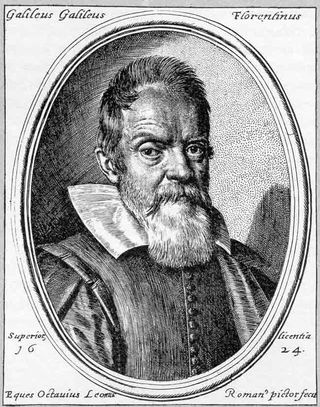
As early as the 5th century BC, Greek philosophers like Empedocles and Aristotle disagreed on the nature of light speed. Empedocles proposed that light, whatever it was made of, must travel and therefore, must have a rate of travel. Aristotle wrote a rebuttal of Empedocles' view in his own treatise, On Sense and the Sensible , arguing that light, unlike sound and smell, must be instantaneous. Aristotle was wrong, of course, but it would take hundreds of years for anyone to prove it.
In the mid 1600s, the Italian astronomer Galileo Galilei stood two people on hills less than a mile apart. Each person held a shielded lantern. One uncovered his lantern; when the other person saw the flash, he uncovered his too. But Galileo's experimental distance wasn't far enough for his participants to record the speed of light. He could only conclude that light traveled at least 10 times faster than sound.
In the 1670s, Danish astronomer Ole Rømer tried to create a reliable timetable for sailors at sea, and according to NASA , accidentally came up with a new best estimate for the speed of light. To create an astronomical clock, he recorded the precise timing of the eclipses of Jupiter's moon , Io, from Earth . Over time, Rømer observed that Io's eclipses often differed from his calculations. He noticed that the eclipses appeared to lag the most when Jupiter and Earth were moving away from one another, showed up ahead of time when the planets were approaching and occurred on schedule when the planets were at their closest or farthest points. This observation demonstrated what we today know as the Doppler effect, the change in frequency of light or sound emitted by a moving object that in the astronomical world manifests as the so-called redshift , the shift towards "redder", longer wavelengths in objects speeding away from us. In a leap of intuition, Rømer determined that light was taking measurable time to travel from Io to Earth.
Rømer used his observations to estimate the speed of light. Since the size of the solar system and Earth's orbit wasn't yet accurately known, argued a 1998 paper in the American Journal of Physics , he was a bit off. But at last, scientists had a number to work with. Rømer's calculation put the speed of light at about 124,000 miles per second (200,000 km/s).
In 1728, English physicist James Bradley based a new set of calculations on the change in the apparent position of stars caused by Earth's travels around the sun. He estimated the speed of light at 185,000 miles per second (301,000 km/s) — accurate to within about 1% of the real value, according to the American Physical Society .
Two new attempts in the mid-1800s brought the problem back to Earth. French physicist Hippolyte Fizeau set a beam of light on a rapidly rotating toothed wheel, with a mirror set up 5 miles (8 km) away to reflect it back to its source. Varying the speed of the wheel allowed Fizeau to calculate how long it took for the light to travel out of the hole, to the adjacent mirror, and back through the gap. Another French physicist, Leon Foucault, used a rotating mirror rather than a wheel to perform essentially the same experiment. The two independent methods each came within about 1,000 miles per second (1,609 km/s) of the speed of light.

Another scientist who tackled the speed of light mystery was Poland-born Albert A. Michelson, who grew up in California during the state's gold rush period, and honed his interest in physics while attending the U.S. Naval Academy, according to the University of Virginia . In 1879, he attempted to replicate Foucault's method of determining the speed of light, but Michelson increased the distance between mirrors and used extremely high-quality mirrors and lenses. Michelson's result of 186,355 miles per second (299,910 km/s) was accepted as the most accurate measurement of the speed of light for 40 years, until Michelson re-measured it himself. In his second round of experiments, Michelson flashed lights between two mountain tops with carefully measured distances to get a more precise estimate. And in his third attempt just before his death in 1931, according to the Smithsonian's Air and Space magazine, he built a mile-long depressurized tube of corrugated steel pipe. The pipe simulated a near-vacuum that would remove any effect of air on light speed for an even finer measurement, which in the end was just slightly lower than the accepted value of the speed of light today.
Michelson also studied the nature of light itself, wrote astrophysicist Ethan Siegal in the Forbes science blog, Starts With a Bang . The best minds in physics at the time of Michelson's experiments were divided: Was light a wave or a particle?
Michelson, along with his colleague Edward Morley, worked under the assumption that light moved as a wave, just like sound. And just as sound needs particles to move, Michelson and Morley and other physicists of the time reasoned, light must have some kind of medium to move through. This invisible, undetectable stuff was called the "luminiferous aether" (also known as "ether").
Though Michelson and Morley built a sophisticated interferometer (a very basic version of the instrument used today in LIGO facilities), Michelson could not find evidence of any kind of luminiferous aether whatsoever. Light, he determined, can and does travel through a vacuum.
"The experiment — and Michelson's body of work — was so revolutionary that he became the only person in history to have won a Nobel Prize for a very precise non-discovery of anything," Siegal wrote. "The experiment itself may have been a complete failure, but what we learned from it was a greater boon to humanity and our understanding of the universe than any success would have been!"
Special relativity and the speed of light
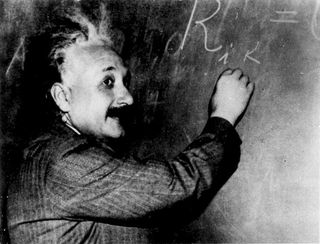
Einstein's theory of special relativity unified energy, matter and the speed of light in a famous equation: E = mc^2. The equation describes the relationship between mass and energy — small amounts of mass (m) contain, or are made up of, an inherently enormous amount of energy (E). (That's what makes nuclear bombs so powerful: They're converting mass into blasts of energy.) Because energy is equal to mass times the speed of light squared, the speed of light serves as a conversion factor, explaining exactly how much energy must be within matter. And because the speed of light is such a huge number, even small amounts of mass must equate to vast quantities of energy.
In order to accurately describe the universe, Einstein's elegant equation requires the speed of light to be an immutable constant. Einstein asserted that light moved through a vacuum, not any kind of luminiferous aether, and in such a way that it moved at the same speed no matter the speed of the observer.
Think of it like this: Observers sitting on a train could look at a train moving along a parallel track and think of its relative movement to themselves as zero. But observers moving nearly the speed of light would still perceive light as moving away from them at more than 670 million mph. (That's because moving really, really fast is one of the only confirmed methods of time travel — time actually slows down for those observers, who will age slower and perceive fewer moments than an observer moving slowly.)
In other words, Einstein proposed that the speed of light doesn't vary with the time or place that you measure it, or how fast you yourself are moving.
Therefore, objects with mass cannot ever reach the speed of light. If an object ever did reach the speed of light, its mass would become infinite. And as a result, the energy required to move the object would also become infinite: an impossibility.
That means if we base our understanding of physics on special relativity (which most modern physicists do), the speed of light is the immutable speed limit of our universe — the fastest that anything can travel.
What goes faster than the speed of light?
Although the speed of light is often referred to as the universe's speed limit, the universe actually expands even faster. The universe expands at a little more than 42 miles (68 kilometers) per second for each megaparsec of distance from the observer, wrote astrophysicist Paul Sutter in a previous article for Space.com . (A megaparsec is 3.26 million light-years — a really long way.)
In other words, a galaxy 1 megaparsec away appears to be traveling away from the Milky Way at a speed of 42 miles per second (68 km/s), while a galaxy two megaparsecs away recedes at nearly 86 miles per second (136 km/s), and so on.
"At some point, at some obscene distance, the speed tips over the scales and exceeds the speed of light, all from the natural, regular expansion of space," Sutter explained. "It seems like it should be illegal, doesn't it?"
Special relativity provides an absolute speed limit within the universe, according to Sutter, but Einstein's 1915 theory regarding general relativity allows different behavior when the physics you're examining are no longer "local."
"A galaxy on the far side of the universe? That's the domain of general relativity, and general relativity says: Who cares! That galaxy can have any speed it wants, as long as it stays way far away, and not up next to your face," Sutter wrote. "Special relativity doesn't care about the speed — superluminal or otherwise — of a distant galaxy. And neither should you."
Does light ever slow down?

Light in a vacuum is generally held to travel at an absolute speed, but light traveling through any material can be slowed down. The amount that a material slows down light is called its refractive index. Light bends when coming into contact with particles, which results in a decrease in speed.
For example, light traveling through Earth's atmosphere moves almost as fast as light in a vacuum, slowing down by just three ten-thousandths of the speed of light. But light passing through a diamond slows to less than half its typical speed, PBS NOVA reported. Even so, it travels through the gem at over 277 million mph (almost 124,000 km/s) — enough to make a difference, but still incredibly fast.
Light can be trapped — and even stopped — inside ultra-cold clouds of atoms, according to a 2001 study published in the journal Nature . More recently, a 2018 study published in the journal Physical Review Letters proposed a new way to stop light in its tracks at "exceptional points," or places where two separate light emissions intersect and merge into one.
Researchers have also tried to slow down light even when it's traveling through a vacuum. A team of Scottish scientists successfully slowed down a single photon, or particle of light, even as it moved through a vacuum, as described in their 2015 study published in the journal Science . In their measurements, the difference between the slowed photon and a "regular" photon was just a few millionths of a meter, but it demonstrated that light in a vacuum can be slower than the official speed of light.
Can we travel faster than light?
— Spaceship could fly faster than light
— Here's what the speed of light looks like in slow motion
— Why is the speed of light the way it is?
Science fiction loves the idea of "warp speed." Faster-than-light travel makes countless sci-fi franchises possible, condensing the vast expanses of space and letting characters pop back and forth between star systems with ease.
But while faster-than-light travel isn't guaranteed impossible, we'd need to harness some pretty exotic physics to make it work. Luckily for sci-fi enthusiasts and theoretical physicists alike, there are lots of avenues to explore.
All we have to do is figure out how to not move ourselves — since special relativity would ensure we'd be long destroyed before we reached high enough speed — but instead, move the space around us. Easy, right?
One proposed idea involves a spaceship that could fold a space-time bubble around itself. Sounds great, both in theory and in fiction.
"If Captain Kirk were constrained to move at the speed of our fastest rockets, it would take him a hundred thousand years just to get to the next star system," said Seth Shostak, an astronomer at the Search for Extraterrestrial Intelligence (SETI) Institute in Mountain View, California, in a 2010 interview with Space.com's sister site LiveScience . "So science fiction has long postulated a way to beat the speed of light barrier so the story can move a little more quickly."
Without faster-than-light travel, any "Star Trek" (or "Star War," for that matter) would be impossible. If humanity is ever to reach the farthest — and constantly expanding — corners of our universe, it will be up to future physicists to boldly go where no one has gone before.
Additional resources
For more on the speed of light, check out this fun tool from Academo that lets you visualize how fast light can travel from any place on Earth to any other. If you’re more interested in other important numbers, get familiar with the universal constants that define standard systems of measurement around the world with the National Institute of Standards and Technology . And if you’d like more on the history of the speed of light, check out the book " Lightspeed: The Ghostly Aether and the Race to Measure the Speed of Light " (Oxford, 2019) by John C. H. Spence.
Aristotle. “On Sense and the Sensible.” The Internet Classics Archive, 350AD. http://classics.mit.edu/Aristotle/sense.2.2.html .
D’Alto, Nick. “The Pipeline That Measured the Speed of Light.” Smithsonian Magazine, January 2017. https://www.smithsonianmag.com/air-space-magazine/18_fm2017-oo-180961669/ .
Fowler, Michael. “Speed of Light.” Modern Physics. University of Virginia. Accessed January 13, 2022. https://galileo.phys.virginia.edu/classes/252/spedlite.html#Albert%20Abraham%20Michelson .
Giovannini, Daniel, Jacquiline Romero, Václav Potoček, Gergely Ferenczi, Fiona Speirits, Stephen M. Barnett, Daniele Faccio, and Miles J. Padgett. “Spatially Structured Photons That Travel in Free Space Slower than the Speed of Light.” Science, February 20, 2015. https://www.science.org/doi/abs/10.1126/science.aaa3035 .
Goldzak, Tamar, Alexei A. Mailybaev, and Nimrod Moiseyev. “Light Stops at Exceptional Points.” Physical Review Letters 120, no. 1 (January 3, 2018): 013901. https://doi.org/10.1103/PhysRevLett.120.013901 .
Hazen, Robert. “What Makes Diamond Sparkle?” PBS NOVA, January 31, 2000. https://www.pbs.org/wgbh/nova/article/diamond-science/ .
“How Long Is a Light-Year?” Glenn Learning Technologies Project, May 13, 2021. https://www.grc.nasa.gov/www/k-12/Numbers/Math/Mathematical_Thinking/how_long_is_a_light_year.htm .
American Physical Society News. “July 1849: Fizeau Publishes Results of Speed of Light Experiment,” July 2010. http://www.aps.org/publications/apsnews/201007/physicshistory.cfm .
Liu, Chien, Zachary Dutton, Cyrus H. Behroozi, and Lene Vestergaard Hau. “Observation of Coherent Optical Information Storage in an Atomic Medium Using Halted Light Pulses.” Nature 409, no. 6819 (January 2001): 490–93. https://doi.org/10.1038/35054017 .
NIST. “Meet the Constants.” October 12, 2018. https://www.nist.gov/si-redefinition/meet-constants .
Ouellette, Jennifer. “A Brief History of the Speed of Light.” PBS NOVA, February 27, 2015. https://www.pbs.org/wgbh/nova/article/brief-history-speed-light/ .
Shea, James H. “Ole Ro/Mer, the Speed of Light, the Apparent Period of Io, the Doppler Effect, and the Dynamics of Earth and Jupiter.” American Journal of Physics 66, no. 7 (July 1, 1998): 561–69. https://doi.org/10.1119/1.19020 .
Siegel, Ethan. “The Failed Experiment That Changed The World.” Forbes, April 21, 2017. https://www.forbes.com/sites/startswithabang/2017/04/21/the-failed-experiment-that-changed-the-world/ .
Stern, David. “Rømer and the Speed of Light,” October 17, 2016. https://pwg.gsfc.nasa.gov/stargaze/Sun4Adop1.htm .
Join our Space Forums to keep talking space on the latest missions, night sky and more! And if you have a news tip, correction or comment, let us know at: [email protected].
Get the Space.com Newsletter
Breaking space news, the latest updates on rocket launches, skywatching events and more!
Vicky Stein is a science writer based in California. She has a bachelor's degree in ecology and evolutionary biology from Dartmouth College and a graduate certificate in science writing from the University of California, Santa Cruz (2018). Afterwards, she worked as a news assistant for PBS NewsHour, and now works as a freelancer covering anything from asteroids to zebras. Follow her most recent work (and most recent pictures of nudibranchs) on Twitter.
The bubbling surface of a distant star was captured on video for the 1st time ever
Just how dark is the universe? NASA's New Horizons probe gives us best estimate yet
Citizen scientists bring intriguing 'hot Jupiter' exoplanet into sharp focus
Most Popular
- 2 Orzorz Galaxy Lite star projector review
- 3 1 week until annular solar eclipse turns the sun into a dramatic 'ring of fire'
- 4 SpaceX launches 20 Starlink internet satellites from California (video, photos)
- 5 'We are close:' SETI astrobiologist Nathalie Cabrol on the search for life

Scientists Believe Light Speed Travel Is Possible. Here’s How.
A functioning warp drive would allow humans to reach the far ends of the cosmos in the blink of an eye.
I n late 2020, physicist Harold “Sonny” White, PhD, research director of the nonprofit Limitless Space Institute , noticed something peculiar—and familiar—in a circular pattern of data plots generated by a recent experiment.
White and his team in LSI’s Houston laboratory were conducting research for the Defense Advanced Research Projects Agency, or DARPA, and had set up these particular experiments to study the energy densities within Casimir cavities, the mysterious spaces between microscopic metal plates in a vacuum. The data plot indicated areas of diminished energy between the plates, which caused them to push toward each other as if trying to fill the void. This is known as negative vacuum energy density, a phenomenon in quantum mechanics called, appropriately enough, the Casimir effect . It’s something that’s helping scientists understand the soupy physics of microscale structures, which some researchers hope can be applied to energy applications that are more practical, such as circuits and electromechanical systems.
But White noticed that the pattern of negative vacuum energy between the plates and around tiny cylindrical columns that they’d inserted in the space looked familiar. It precisely echoed the energy pattern generated by a type of exotic matter that some physicists believe could unlock high-speed interstellar travel. “We then looked, mathematically, at what happens if we placed a one-micron sphere inside of a four-micron cylinder under the same conditions, and found that this kind of structure could generate a little nanoscale warp bubble encapsulating that central region,” White explains.
That’s right—a warp bubble. The essential component of a heretofore fictional warp drive that has for decades been the obsession of physicists, engineers, and sci-fi fans. Warp drive, of course, is the stuff of Star Trek legend, a device enclosed within a spacecraft that gives the mortals aboard the ability to rip around the cosmos at superhuman speed. To the lay sci-fi fan, it’s a “black box”—a convenient, completely made-up workaround to avoid the harsh realities of interstellar travel. However, after decades of speculation, research, and experimentation, scientists believe a warp drive could actually work.
To emphasize: White didn’t actually make a warp bubble. But the data from his study led to an aha moment: For the first time, a buildable warp bubble showed promise of success.

Warp technology’s core science is surprisingly sound. Though the specific mechanics of an actual device haven’t been fully unpacked, the math points toward feasibility. In short, a real-life warp drive would use massive amounts of energy, which can come in the form of mass, to create enough gravitational pull to distort spacetime in a controlled fashion, allowing a ship to speed along inside a self-generated bubble that itself is able to travel at essentially any speed. Warp drives popped up in fiction intermittently for several decades before Star Trek creator Gene Roddenberry plugged one into the USS Enterprise in 1966. But Miguel Alcubierre, PhD, a Mexican theoretical physicist and professed Star Trek enthusiast, gave the idea real-world legs when he released a paper in 1994 speculating that such a drive was mathematically possible. It was the first serious treatment of a warp drive’s feasibility, and it made headlines around the world. His breakthrough inspired more scientists to nudge the theoretical aspects of warp drive toward concrete, practical applications.
“I proposed a ‘geometry’ for space that would allow faster-than-light travel as seen from far away, essentially expanding space behind the object we want to move and contracting it in front,” Alcubierre says. “This forms a ‘bubble’ of distorted space, inside of which an object—a spaceship, say—could reside.”
Physicists tend to speak in relative terms. By injecting the sly qualifier “as seen from far away,” Alcubierre might sound like he’s describing the galactic equivalent of an optical illusion —an effect perhaps similar to driving past a truck going the opposite direction on the highway when you’re both going 60 miles an hour. Sure feels like a buck-twenty, doesn’t it? But the A-to-B speed is real; the warp effect simply shortens the literal distance between two points. You’re not, strictly speaking, moving faster than light. Inside the bubble, all appears relatively normal, and light moves faster than you are, as it should. Outside the bubble, however, you’re haulin’ the mail.
THOUGH THE SPECIFIC MECHANICS OF AN ACTUAL DEVICE HAVEN’T BEEN UNPACKED, THE MATH POINTS TOWARD FEASIBILITY.
Alcubierre’s proposal had solved one of the initial hurdles to achieving warp speeds: The very idea clashes with Einstein’s long-accepted theory of general relativity, which states that nothing can travel faster than the speed of light, but it doesn’t preclude space itself from traveling faster than that. In fact, scientists speculate that the same principles explain the rapid expansion of the universe after the Big Bang .
While concluding that warp speed was indeed possible, Alcubierre also found that it would require an enormous amount of energy to sustain the warp bubble. He theorized that negative energy—the stuff hinted at by White’s experimentation with Casimir cavities—could be a solution. The only problem is that no one has yet proved that negative energy is real. It’s the unobtanium of our spacefaring imaginations, something researchers only believe to exist. In theory, however, this unknown matter may be sufficiently powerful that future warp drive designers could channel it to contract spacetime around it. In conceptual drawings of warp-capable spacecraft , enormous material rings containing this energy source surround a central fuselage. When activated, it warps spacetime around the entire ship. The more intense the warping, the faster the warp travel is achieved.
Of course, it’s not that simple. Physicist José Natário, PhD, a professor at the Instituto Superior Técnico in Lisbon, wrote his own influential paper about the mathematical feasibility of warp drives in 2001. However, he is concerned about practical conundrums, like the amount of energy required. “You need to be able to curve spacetime quite a lot in order to do this,” he says. “We’re talking about something that would be much, much more powerful than the sun.”
Alcubierre is similarly skeptical that his theoretical ideas might ever be used to develop a working warp drive. “In order to have a bubble about 100 meters wide traveling at precisely the speed of light, you would need about 100 times the mass of the planet Jupiter converted into negative energy, which of course sounds absurd,” he says. By that standard, he concludes, a warp drive is very unlikely.
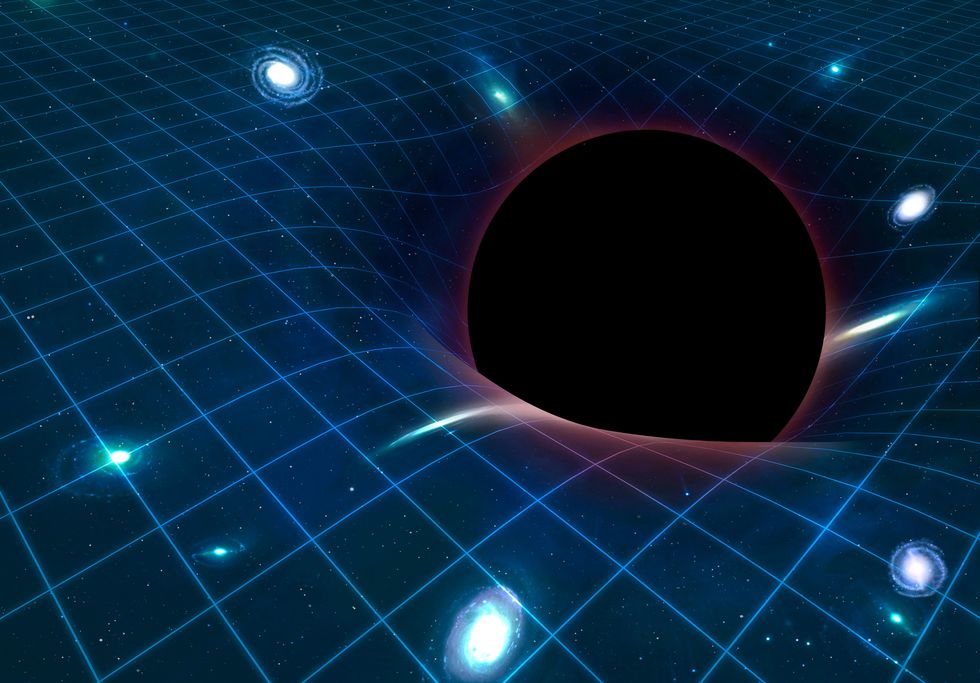
Physicists love a challenge, though. In the 29 years since Alcubierre published his paper, other scientists have wrestled with the implications of the work, providing alternative approaches to generating the energy using more accessible power sources, finding oblique entry points to the problem, and batting ideas back and forth in response to one another’s papers. They use analogies involving trampolines , tablecloths, bowling balls, balloons, conveyor belts, and music to explain the physics.
They even have their own vocabulary. It’s not faster-than-light travel; it’s superluminal travel, thank you. Then there’s nonphysical and physical—a.k.a. the critical distinction between theoretical speculation and something that can actually be engineered. (Pro tip: We’re aiming for physical here, folks.) They do mention Star Trek a lot, but never Star Wars . Even the scruffiest-looking nerf herder knows that the ships in Star Wars use hyperdrive, which consumes fuel, rather than warp drives, which don’t use propulsive technology but instead rely on, well, warping. They’re also vague about details like what passengers would experience, what gravity is like on board since you’re carrying around boatloads of energy, and what would happen if someone, say, jumped out of the ship while warping. (A speculative guess: Nothing good.)
Such research isn’t typically funded by academic institutions or the DARPAs and NASAs of the world, so much of this work occurs in the scientists’ spare time. One such scientist and Star Trek enthusiast is physicist Erik Lentz, PhD. Now a researcher at Pacific Northwest National Laboratory in Richland, Washington, Lentz was doing postdoctoral work at Göttingen University in Germany when, amid the early, isolated days of the pandemic, he mulled the idea of faster-than-light travel. He published a paper in 2021 arguing that warp drives could be generated using positive energy sources instead of the negative energy that Alcubierre’s warp drive seemed to require.
“There are a number of barriers to entry to actually being able to build a warp drive,” Lentz says. “The negative energy was the most obvious, so I tried to break that barrier down.”
He explored a new class of solutions in Einstein’s general relativity while focusing on something called the weak-energy condition, which, he explains, tracks the positivity of energy in spacetime. He hit upon a “soliton solution”—a wave that maintains its shape and moves at a constant velocity—that could both satisfy the energy-level challenge and travel faster than light. Such a warp bubble could travel along using known energy sources, though harnessing those at the levels needed are still far beyond our capabilities. The next step, he notes, may be bringing the energy requirements for a warp drive to within the range of a nuclear fusion reactor.
A fusion-powered device could theoretically travel to and from Proxima Centauri , Earth’s nearest star, in years instead of decades or millennia, and then go faster and faster as power sources improve. Current conventional rocket technology, on the other hand, would take 50,000 years just for a one-way trip—assuming, of course, there was an unlimited fuel supply for those engines.
“IF YOU COLLIDE WITH SOMETHING ON YOUR PATH, IT WOULD ALMOST CERTAINLY BE CATASTROPHIC.”
Like Alcubierre’s original thesis, Lentz’s paper had a seismic impact on the warp drive community, prompting yet another group of scientists to dig into the challenge. Physicist Alexey Bobrick and technology entrepreneur Gianni Martire have been particularly prolific. In 2021, they released a paper theorizing that a class of subliminal warp drives, traveling at just a fraction of light speed, could be developed from current scientific understanding. While that paper essentially argued that it’s perfectly acceptable to walk before you can run, they followed it up with another theory earlier this year that describes how a simulated black hole , created using sound waves and glycerin and tested with a laser beam, could be used to evaluate the levels of gravitational force needed to warp spacetime. The duo coded that breakthrough into a public app that they hope will help more quickly push theoretical ideas to practical ones. Though the team is waiting for the technology to clear a peer review stage before releasing details, the app is essentially a simulator that allows scientists to enter their warp-speed equations to validate whether they’re practical.
“When somebody publishes a warp metric for the first time, people say, ‘Okay, is your metric physical?’” Martire says. The answer to that question—whether the metric has practical potential or is strictly theoretical—is hard to establish given the challenges of testing these hypotheses. That determination could take six to eight months. “Now we can tell you within seconds, and it shows you visually how off you are or how close you are,” he says.
While useful, the app will speed up the preliminary math only for future researchers. Galaxy-sized challenges remain before we ever experience turbocharged interstellar travel. Alcubierre worries in particular about what may happen near the walls of the warp bubble. The distortion of space is so violent there, he notes, that it would destroy anything that gets close. “If you collide with something on your path, it would almost certainly be catastrophic,” he says.
Natário mulls even more practical issues, like steering and stopping. “It’s a bubble of space, that you’re pushing through space,” he says. “So, you’d have to tell space ... to curve in front of your spaceship.” But therein lies the problem: You can’t signal to the space in front of you to behave the way you want it to.
His opinion? Superluminal travel is impossible. “You need these huge deformations that we have no idea how to accomplish,” Natário says. “So yes, there has been a lot of effort toward this and studying these weird solutions, but this is all still completely theoretical, abstract, and very, very, very, very far from getting anywhere near a practical warp drive.” That’s “very” to the power of four, mind you—each crushing blow pushing us exponentially, excruciatingly further and further away from our yearned-for superluminal lives.
Ultimately, the pursuit of viable high-speed interstellar transportation also points to a more pressing terrestrial challenge: how the scientific community tackles ultra-long-term challenges in the first place. Most of the research so far has come from self-starters without direct funding, or by serendipitous discoveries made while exploring often unrelated research, such as Dr. White’s work on Casimir cavities.
Many scientists argue that we’re in a multi-decade period of stagnation in physics research, and warp drive—despite its epic time horizons before initial research leads to galaxy-spanning adventures—is somewhat emblematic of that stagnation. Sabine Hossenfelder, a research fellow at the Frankfurt Institute for Advanced Studies and creator of the YouTube channel Science Without the Gobbledygook , noted in a 2020 blog post that physics research has drifted away from frequent, persistent physical experimentation to exorbitant infusions of cash into relatively few devices. She writes that with fewer experiments, serendipitous discoveries become increasingly unlikely. Without those discoveries, the technological progress needed to keep experiments economically viable never materializes.
When asked whether this applied equally to warp drive, Hossenfelder sees a faint but plausible connection. “Warp drives are an idea that is not going to lead to applications in the next 1,000 years or so,” she says. “So they don’t play a big role in that one way to another. But when it comes to the funding, you see some overlap in the problems.”
So, despite all the advances, the horizon for a warp drive remains achingly remote. That hasn’t fazed the scientists involved, though. A few years ago, while teaching in France, White visited the Strasbourg Cathedral with his wife. While admiring its 466-foot-tall spire, he was struck by the fact that construction began in 1015 but didn’t wrap up until 1439—a span of 424 years. Those who built the basement had no chance of ever seeing the finished product, but they knew they had to do their part to aid future generations. “I don’t have a crystal ball,” White says. “I don’t know what the future holds. But I know what I need to be doing right now.”
Eric Adams is a writer and photographer who focuses on technology, transportation, science, travel, and other subjects for a wide range of outlets, including Wired, The Drive, Gear Patrol, Men's Health, Popular Science, Forbes, and others.

Pop Mech Pro

This Study Backs a Quantum Theory of Consciousness

Aliens May Be Hiding Underground, Scientists Say

The Brain Could Be 100 Million Times More Powerful
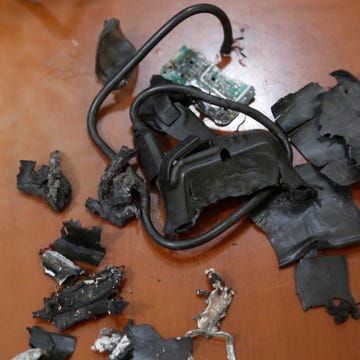
Following Pager Explosions, Is Your Device Safe?

America’s New Plan for Its Secret Stealth Fighter

Our Consciousness May Come From a Higher Dimension

Could This Metal Shard Be Alien Technology?
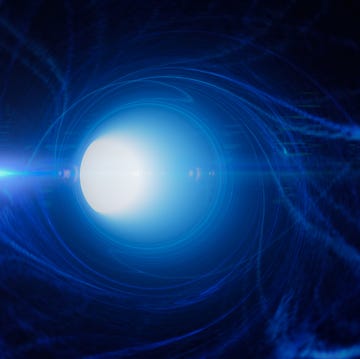
Wormholes May Be a Portal for Interstellar Travel
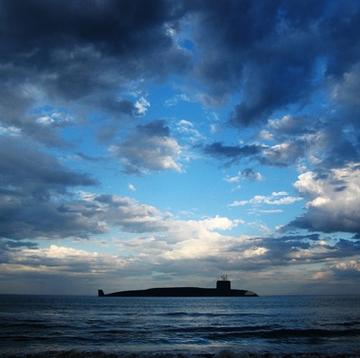
What We Know About India’s Secret New Submarine

Debunking the 9/11 Myths: The Airplanes

We Debunked the 9/11 Myths About United Flight 93

Myths About the 9/11 Pentagon Attack: Debunked

IMAGES
VIDEO
COMMENTS
Faster-than-light (superluminal or supercausal) travel and communication are the conjectural propagation of matter or information faster than the speed of light (c). The special theory of relativity implies that only particles with zero rest mass (i.e., photons) may travel at the speed of light, and that nothing may travel faster.
1. The Big Bang itself expanded much faster than the speed of light. But this only means that "nothing can go faster than light.". Since nothing is just empty space or vacuum, it can expand ...
Cherenkov radiation glows because the core of the Advanced Test Reactor is submerged in water to keep it cool. In water, light travels at 75 percent the speed it would in the vacuum of outer space, but the electrons created by the reaction inside of the core travel through the water faster than the light does.
So, according to de Rham, the only thing capable of traveling faster than the speed of light is, somewhat paradoxically, light itself, though only when not in the vacuum of space. Of note ...
Linking an event outside the light cone with one inside it requires a signal that travels faster than light. If event A is in the light cone and event B is outside it, then the supernova and egg ...
This is an area that attracts plenty of bright ideas, each offering a different approach to solving the puzzle of faster-than-light travel: achieving a means of sending something across space at superluminal speeds.. Hypothetical travel times to Proxima Centauri, the nearest-known star to the Sun. (E. Lentz) There are some problems with this notion, however.
Symmetry is a physics concept that goes all the way back to Galileo's time. The secret to faster-than-light physics could be to double down on the number of dimensions. Specifically, the ...
If humanity wants to travel between stars, people are going to need to travel faster than light. New research suggests that it might be possible to build warp drives and beat the galactic speed limit.
The Sciences. An Italian experiment has unveiled evidence that fundamental particles known as neutrinos can travel faster than light. Other researchers are cautious about the result, but if it ...
New research suggests that it might be possible to build warp drives and beat the galactic speed limit. Faster than light travel is the only way humans could ever get to other stars in a ...
1) Electromagnetic Fields. Most of the processes that accelerate particles to relativistic speeds work with electromagnetic fields — the same force that keeps magnets on your fridge. The two components, electric and magnetic fields, like two sides of the same coin, work together to whisk particles at relativistic speeds throughout the universe.
The fact is we'll never be able to travel beyond the speed of light, at least based on our current understanding of established physics. As any object with mass accelerates - like a proton in ...
On one hand, the speed of light is just a number: 299,792,458 meters per second. And on the other, it's one of the most important constants that appears in nature and defines the relationship of ...
But so far, faster-than-light travel is possible only in science fiction. In Isaac Asimov's Foundation series , humanity can travel from planet to planet, star to star or across the universe ...
Scientists have extended Einstein's equations for faster-than-light travel. Here a three-dimensional (right) graph shows the relationship between three different velocities: v, u and U, where v is ...
Faster-than-light travel: Is warp drive really possible? - BBC Science Focus Magazine.
1 To travel backward in time, the spacecraft's velocity must exceed: where u is the velocity of the planet relative to Earth, and c is the speed of light. Seth Lloyd, professor of quantum ...
As an object approaches the speed of light, its mass rises precipitously. If an object tries to travel 186,000 miles per second, its mass becomes infinite, and so does the energy required to move it. For this reason, no normal object can travel as fast or faster than the speed of light. That answers our question, but let's have a little fun and ...
They found that, on average, the neutrinos made the 730-kilometer, 2.43-millisecond trip roughly 60 nanoseconds faster than expected if they were traveling at light speed. "It's a straightforward time-of-flight measurement," says Antonio Ereditato, a physicist at the University of Bern and spokesperson for the 160-member OPERA collaboration.
The speed of light in a vacuum is 186,282 miles per second (299,792 kilometers per second), and in theory nothing can travel faster than light.
Nothing can travel faster than 300,000 kilometers per second (186,000 miles per second). Only massless particles, including photons, which make up light, can travel at that speed. It's impossible to accelerate any material object up to the speed of light because it would take an infinite amount of energy to do so.
Nothing can travel faster than the speed of light, according to the gravity-bound principles of Albert Einstein's theory of general relativity. So the bubble is designed such that observers ...
Here's How. Scientists Believe Light Speed Travel Is Possible. Here's How. A functioning warp drive would allow humans to reach the far ends of the cosmos in the blink of an eye. I n late 2020 ...